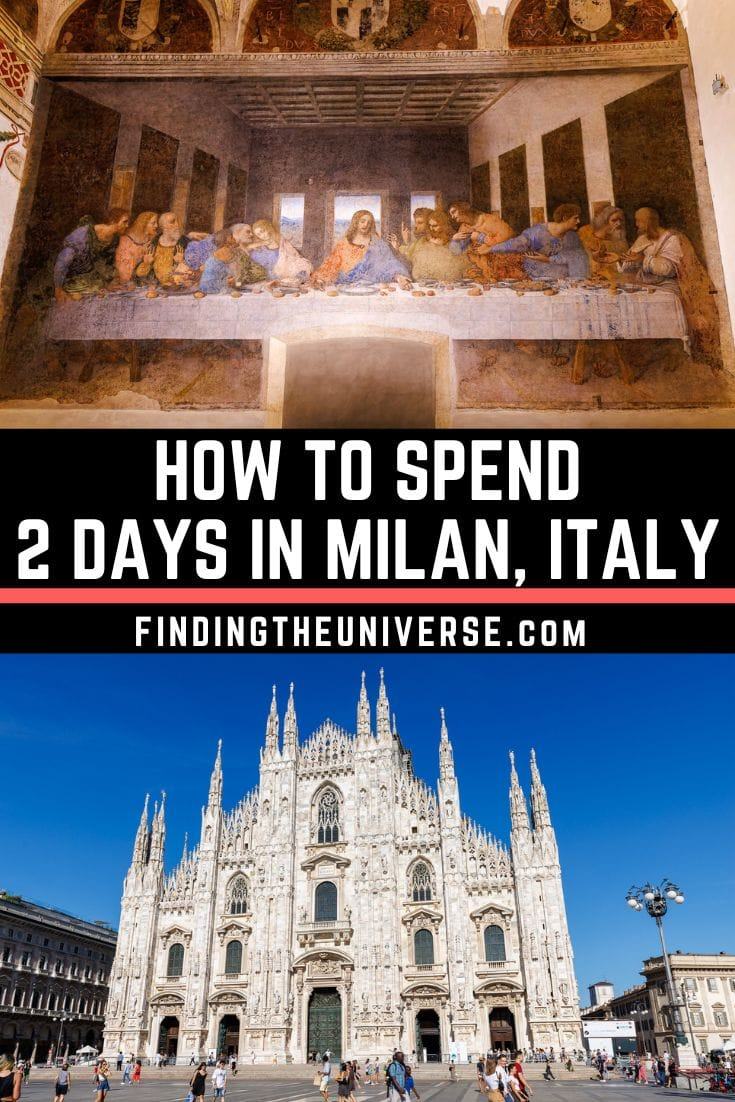Milan is the second largest city in Italy after Rome and the capital of Lombardy. It’s well known as being the home of high-end Italian fashion designers, and many people come to Milan just for the shopping.
However, there is lots more to do in Milan than shop. The city has spectacular artworks, including one of the most famous murals in the world, Leonardo Da Vinci’s The Last Supper. It also has loads of museums, fantastic food, parks, churches, and cultural activities.
Milan also makes a great base for exploring the local region, with popular destinations like Lake Como, Lake Garda, Verona, and Bologna, only an hour or so away by train.
We’ve visited Milan a number of times, and today we’re going to share an idea of how to spend two days in Milan.
This guide will include a suggested itinerary for each day in Milan, as well as tips on getting around, where to stay and how to save money. We’ll also share some tips on day trips from Milan.
2 Day Milan Itinerary
This two-day Milan itinerary is ideal for first-time visitors to Milan, and those wishing to see the highlights of the city. We like to pack in a lot when we visit a city, especially on our first visit.
As always with our itineraries, we recommend using this as a basis, and adjusting it to suit your interests and travel style.
If you’re looking for more options, also check out our guide to things to do in Milan. That article includes all the attractions in this itinerary as well as a number of other places you might want to visit, especially if you have more than 2 days in Milan.
Milan Itinerary Day 1
Day one of our Milan itinerary has you visiting some of the most well-known and popular attractions in the city, starting with one of the world’s most famous artworks.
Today the attractions are all within walking distance of one another, and this day’s itinerary is set up for someone who is walking between each attraction. But do check out our guide to getting around in Milan later on in the post for other options, as Milan also has a great public transit system and taxis are also easy to get.
If you are planning to do a sightseeing bus tour, then I’d probably recommend doing it this morning so you can start with an overview of the city. I’d also plan your stops in an order that makes sense with the bus schedule.
Also a note today that if you are following our itinerary, we recommend bringing along your photo ID (for The Last Supper tickets) and to make sure that you are dressed to meet the various church dress code guidelines (shoulders and knees covered).
On with Day 1!
The Last Supper (Santa Maria della Grazie)
Leonardo Da Vinci is responsible for some of the world’s most recognizable artworks, including the Mona Lisa and the Vitruvian Man. The Last Supper is another one of his instantly recognizable works, and you’ll find it in Milan.
It’s found painted onto the wall of the dining room of the Convent of Santa Maria della Grazie, which is still a working church and Dominican convent.
As the name suggests, the mural depicts the Last Supper of Jesus with the Twelve Apostles. It freezes the moment in time when Jesus has just announced that one of the twelve will betray him, and captures the range of emotions that the apostles have to this announcement.
The first thing that strikes you when you see the artwork is the incredible sense of perspective that Da Vinci manages to convey. The painting perfectly fits with the room where it is painted, seeming to extend it into the horizon. And the whole composition is carefully crafted so all the leading lines converge on the central figure of Christ.
It’s also beautifully symmetrical, and the emotion on the faces of the various subjects seems to clearly capture how each character might have been feeling as Jesus revealed the revelation of his upcoming betrayal.
Today, the Last Supper is regarded as one of the world’s most important artworks, and certainly one of the most important that Da Vinci created.
Unfortunately, Da Vinci created the work using experimental and unfamiliar techniques. This meant that it started to decay almost immediately. Over the centuries, various restoration attempts have been made, with varying degrees of success. The end result is what you see today, and whilst it is still in the spirit of Da Vinci’s work, much of the original has been lost.
That said, it’s still quite an incredible sight and well worth seeing.
If you do want to visit the Last Supper, which we recommend, you should be aware it is a very popular attraction and you will definitely want to plan your visit in advance. This is not an attraction you can just turn up and visit.
Tickets are very limited, with only 30 visitors allowed in per 15-minute time slot. Many of those tickets are allocated to tour groups, but there is an allocation for individuals to buy tickets.
Individual tickets can be bought on the official website here. Tickets are normally released 1 to 4 months in advance, and tend to sell out quickly. The announcement for when tickets will be put on sale for upcoming months is published on the website here.
If you can’t find a ticket for the dates you are visiting Milan, your best option is to book a tour which includes the Last Supper. Tour groups have access to a separate ticket allocation, and usually have better availability as a result.
Whilst a tour is going to be more expensive, it will have the benefit of including an expert tour guide who can explain what you are seeing. There is little written information in the room itself, so having a tour guide (or guidebook) is really useful. Our guide also took us on a guided visit of the church afterwards.
We visited the Last Supper as part of this tour with Take Walks, one of our favorite walking tour companies. We’ve taken tours with them all around the world, and appreciate the knowledgeable guides and small groups.
You can check availability for their Last Supper tour here, which when we took it also included a city walking tour and a visit to the Milan Duomo.
If they don’t have availability, or you’d just like some other options, check out this list of tours on GetYourGuide for some other options.
Regardless of how you visit, make sure you turn up in advance to allow plenty of time so you can collect your ticket and store your bags, any food/water, and other larger items in the on-site lockers. All food and drinks (even bottled water) needs to be stored in the lockers and can’t be taken inside.
When we visited, we also needed photo IDs in order to collect our tickets, so we’d recommend also bringing along your passports.
Finally, don’t forget to allocate some time after your visit to look at the small museum, gift shop, and to visit the church of Santa Maria delle Grazie as well. The church is free to visit and was completed in 1497, with the apse designed by notable architect Bramante.
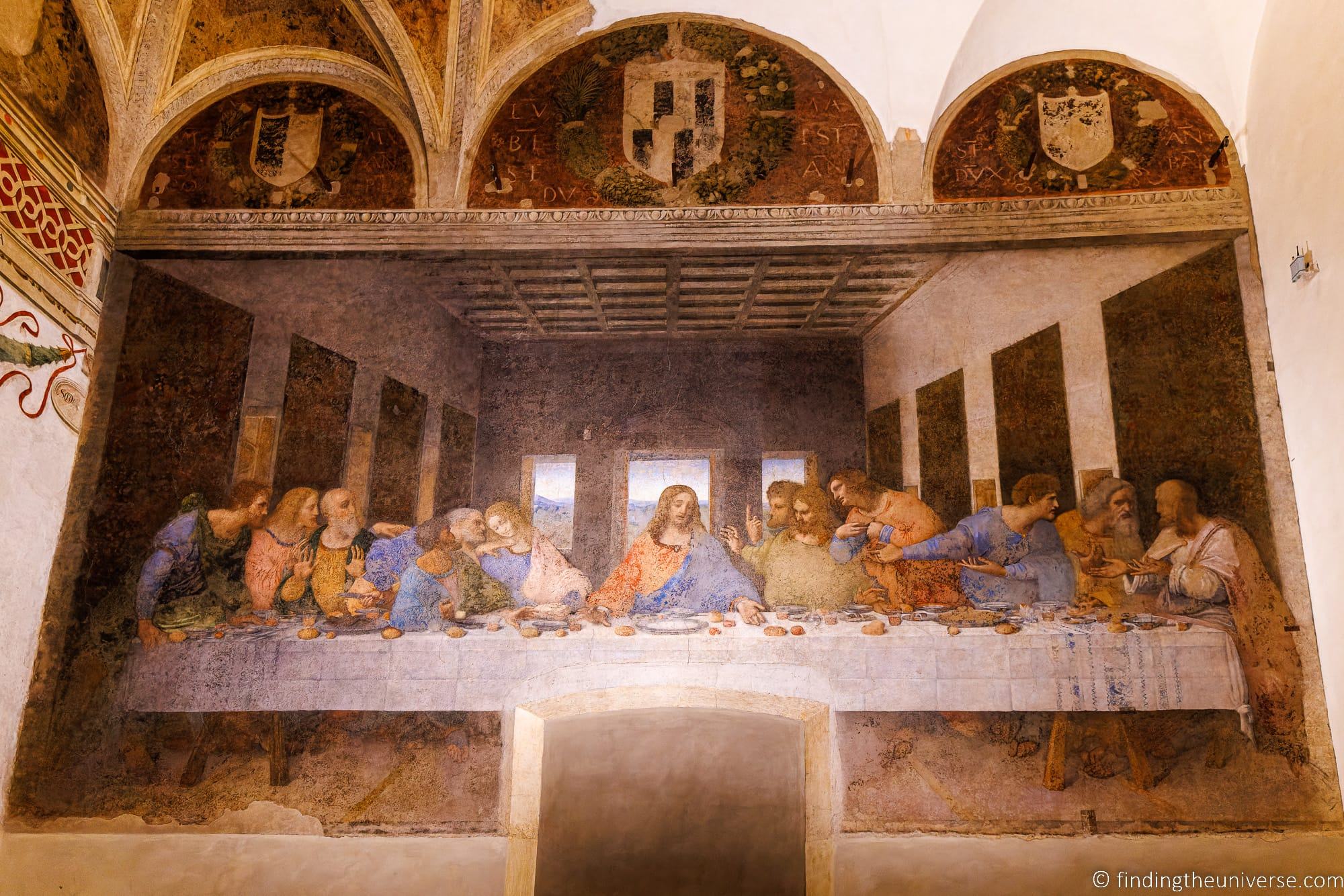
Chiesa di San Maurizio al Monastero Maggiore
If you have time between visiting The Last Supper and the Duomo, we recommend a stop at San Maurizio al Monastero Maggiore. This church is about a five-minute walk from the church of Santa Maria della Grazie where The Last Supper is found..
This dates from 1518, and was originally part of Milan’s largest Benedictine convent. Today, the convent is where you will find the Civic Archaeological Museum, however, the church is still operational and looks much as it did when it was in use by the nuns.
The interior of the church is a vaulted nave which is divided into two parts. One of these was the area for general worship and is where the main altar is to be found. The other area was the Hall of Nuns, and was where the nuns would gather to observe mass through a grating.
Until the late 18th century, the nuns were not permitted to cross the divide into the general worship area.
The main reason you will want to visit the church is for the incredible frescoes that you will find within. These are found on both sides of the church as well as on the dividing wall, and depict a variety of religious scenes including the life of San Maurizio, the patron saint of Milan.
The church is free to visit but donations are of course welcome and appreciated. As it is a religious building, a dress code which involves covering your shoulders and knees applies. You can see more details about visiting on the website.
Note about those interested in archaeology, should also consider a visit to the adjoining Civic Archaeological Museum in the former convent. The museum covers the ancient to medieval periods, including Milan’s time as capital of the Western Roman Empire. There is an entrance fee to visit.
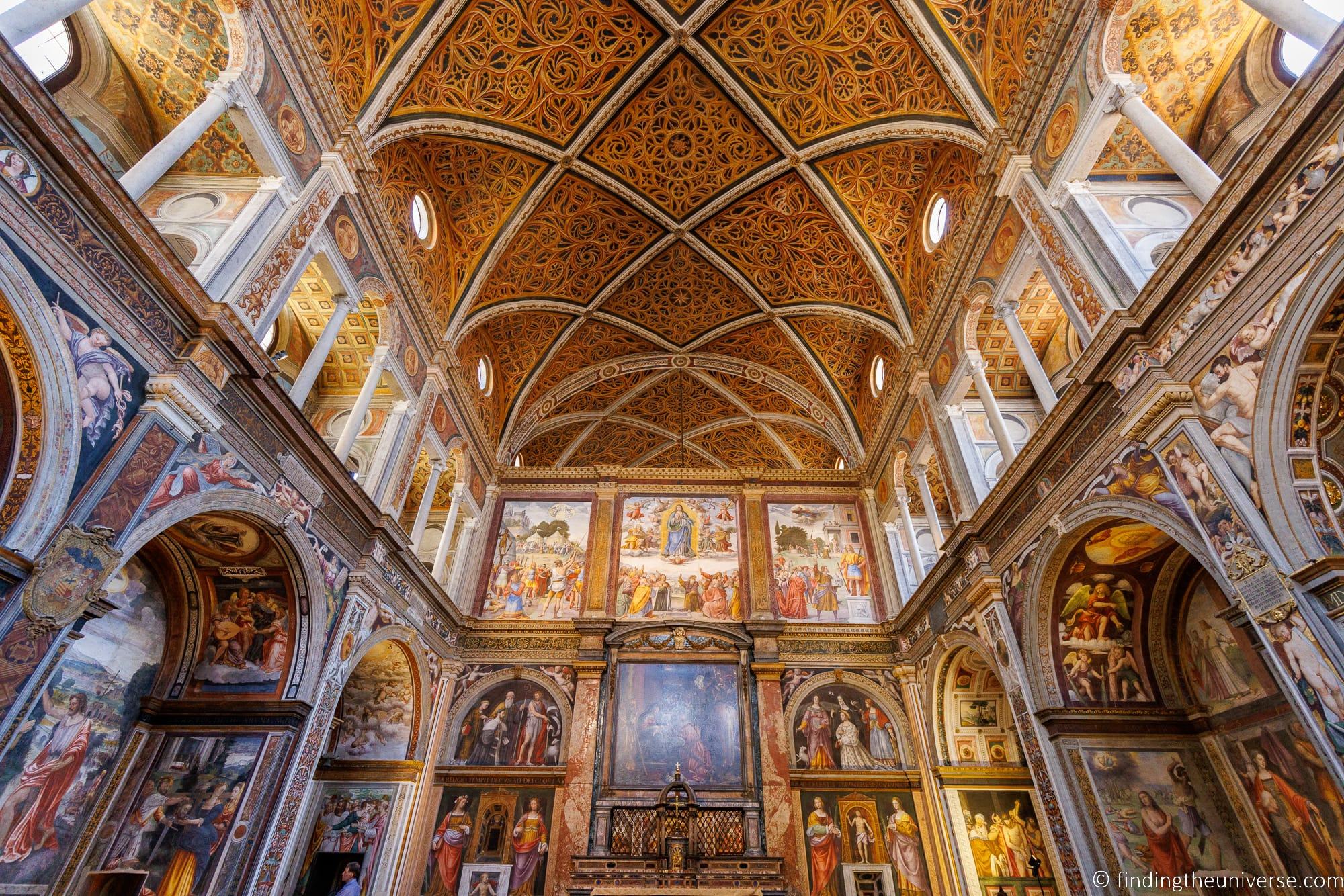
Starbucks Reserve Roastery
Next recommended stop is the Starbucks Reserve Roastery, which is about a 10-minute walk from the Chiesa di San Maurizio. This was Italy’s first Starbucks.
Starbucks obviously wanted to make an impact with their first Italian venue. Whilst Starbucks was originally inspired by Italian coffee culture, American coffee culture is very different. It’s clear that thought went into establishing the first Starbucks in Italy in order to bridge the divide.
We think the effort certainly paid off. The Starbucks Reserve Roastery is found in the former Milan Stock Exchange and Post Office building, which is a very impressive structure.
Inside, you’ll find a large space where you can watch the coffee roasting process from end to end, and choose from an impressive array of coffee based beverages. These range from the expected classics through to everything from pour-over coffees, coffee tasting flights, and even coffee based cocktails.
There are also other, non-coffee based drinks as well as snacks. On-site you’ll also find a store where you can purchase a range of coffee paraphernalia and Starbucks souvenirs.
The Starbucks Roastery is free to visit. Even if you aren’t a fan of Starbucks, we still recommend a quick look at the impressive exterior and interior of this historic building. You can find out more about visiting on the official website here.
Of course, if you would prefer a more traditional coffee experience, we have a recommendation for that too. There are many cafes to be found in Milan, but we would recommend Marchesi 1824. The original store is on the same route you’ll be following, just a couple of minutes’ walk from the church.
Founded in 1824, this is one of the oldest cafes and pastry shops you can visit in Milan, and the interior of the shop is lovely. So if you are after a quick espresso pick me up and delicious pastry, this is an excellent option. There are also a few tables in the back if you need a break.
Marchesi is now owned by Prada so there is a second Milan location in the Prada store at the Galleria Vittorio Emanuele II.
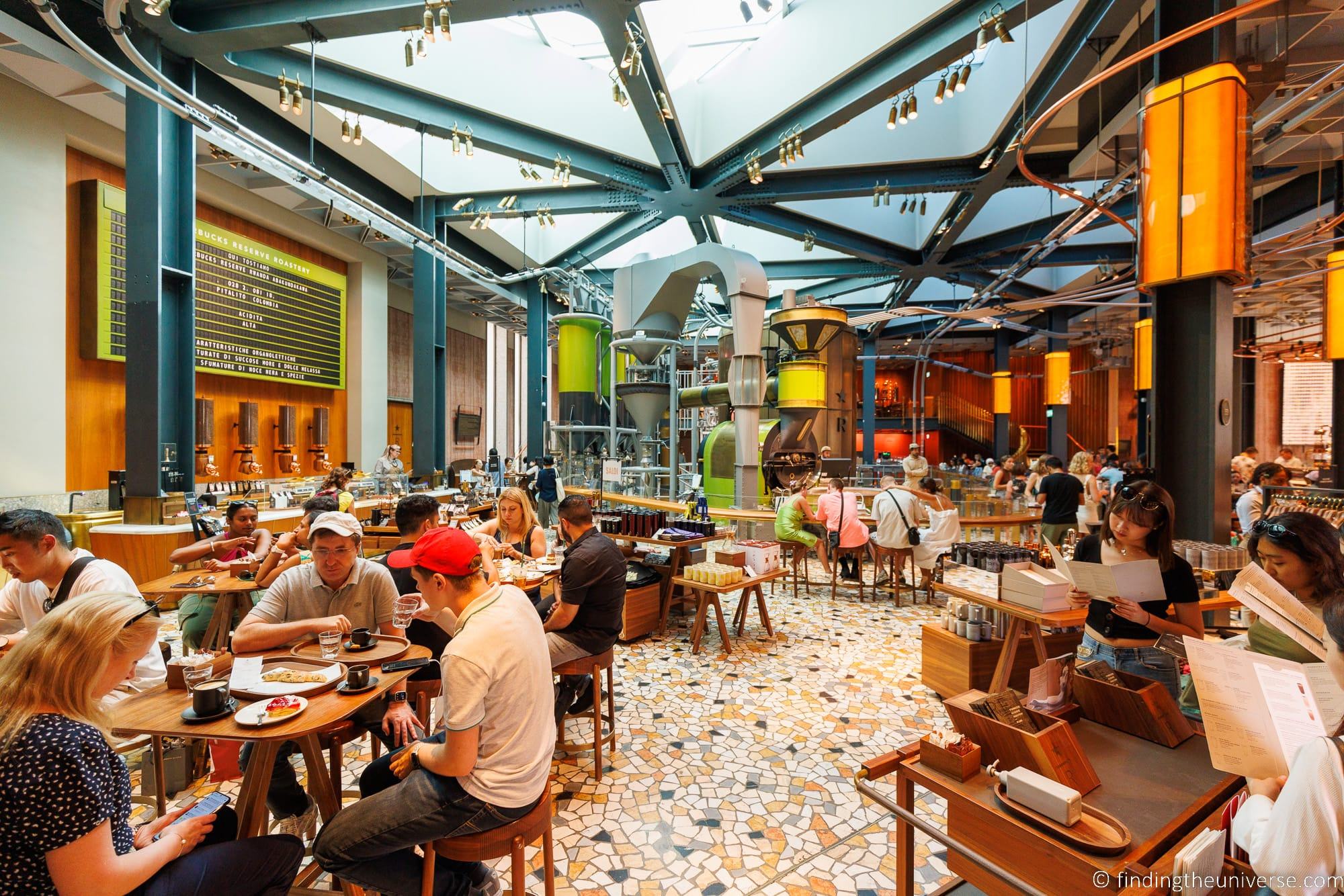
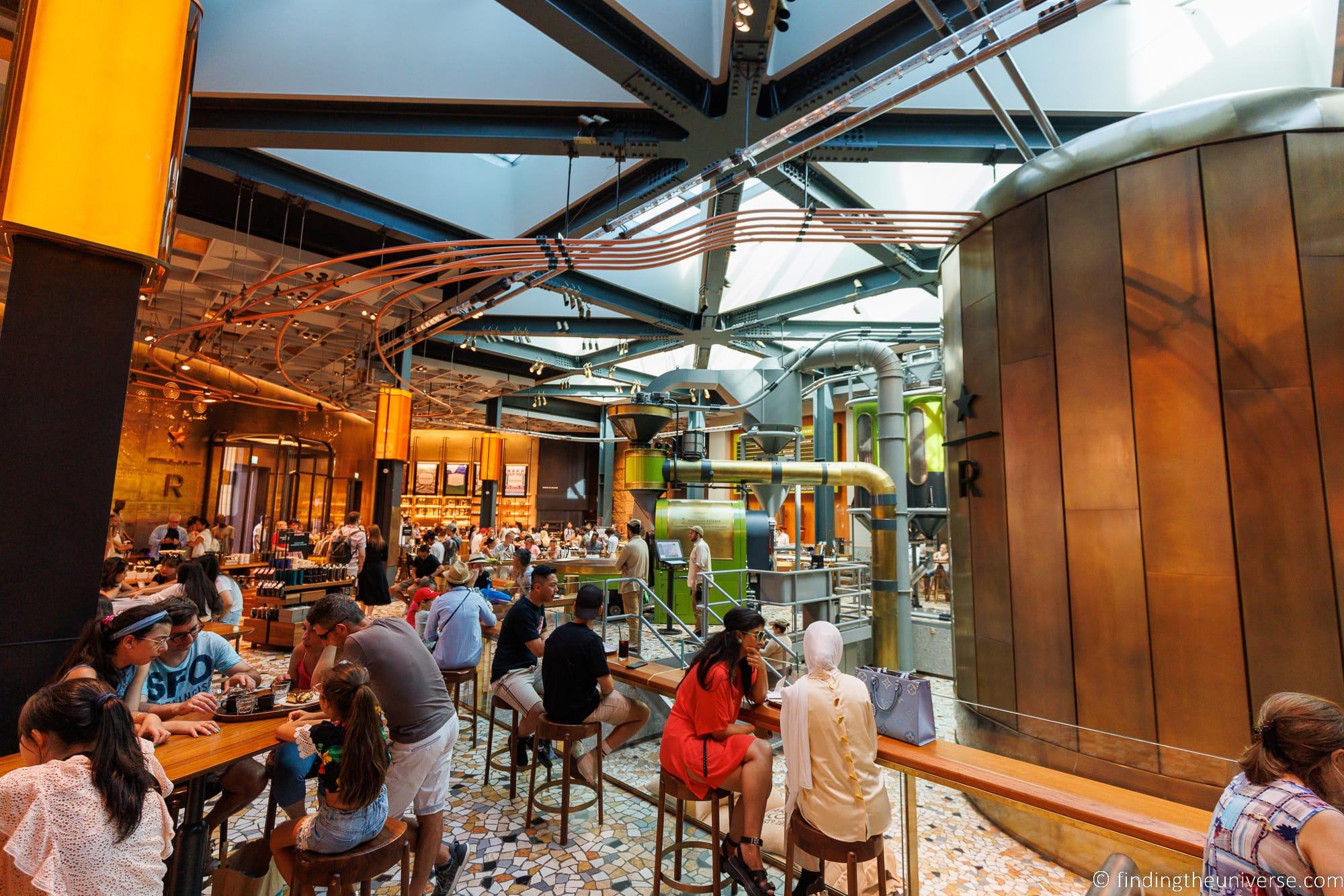
Duomo di Milano
Fortified with coffee, it’s time to visit one of Milan’s most impressive buildings, the Duomo di Milan or Milan Cathedral. It is about a 5 minute walk from the Starbucks Reserve Roastery to the Milan Duomo.
This massive marble construction is one of the largest cathedrals in the world, and a must-see when visiting Milan.
The Milan Duomo took almost 600 years to build, with the groundbreaking in 1386 and the building only being officially completed in 1965.
This extended building duration meant that the cathedral was built through both the Gothic and Renaissance periods, and the design draws on a variety of often contrasting architectural styles.
As you might imagine, over the period it was built the design fell in and out of fashion. Alternatively revered and criticized through the ages, we personally think that it was worth the 600 year wait to get to the finished building.
Today, the Duomo is the cathedral church of Milan and an active place of worship. It’s the third largest church in the world and the largest in Italy, and there is a lot to see here.
Inside you’ll find the world’s largest gothic vaults, statues, altars, sarcophagi and beautiful stained-glass windows. There’s also an important relic which holds what is believed to be one of the nails used in the crucifixion of Christ.
Underneath the Duomo, and accessed from inside, you’ll find the Archeological Area. This is where you can see what has been excavated of the Baptisteries of Saint John and Santa Tecla which date from the 4th century AD.
One of our favourite parts of the Duomo is the roof terrace. The roof is a large space filled with stunning gothic spires, and it was designed so visitors could come up and admire them up close. Rooftop access is possible via either stairs or an elevator.
Finally, just across the Piazza from the Duomo is the Museum of the Duomo. Here you will find a number of pieces of art and elements like statues from the cathedral.
All the areas of the Duomo require a ticket to access. Different tickets are available depending on which areas you would like to visit.
Most of the cathedral tickets include access to the cathedral, the archaeological area, and the Duomo Museum. You pay extra if you also want to visit the rooftop terraces.
Tickets can be bought here. An option with an audioguide is available here, or you can book a guided tour here. The Cathedral with rooftop access is also included on the Milan Pass.
Don’t forget that this is an active religious building, and like in most churches across Italy, a dress code applies if you wish to enter the cathedral. This generally means nothing too skimpy and that you need to have both your shoulders and knees covered. This applies for both men and women.
Note that if you are on a tight budget, you can still enjoy the lively Piazza del Duomo and the impressive exterior of this magnificent cathedral for free. It is definitely still worth seeing even if you aren’t planning to go inside.
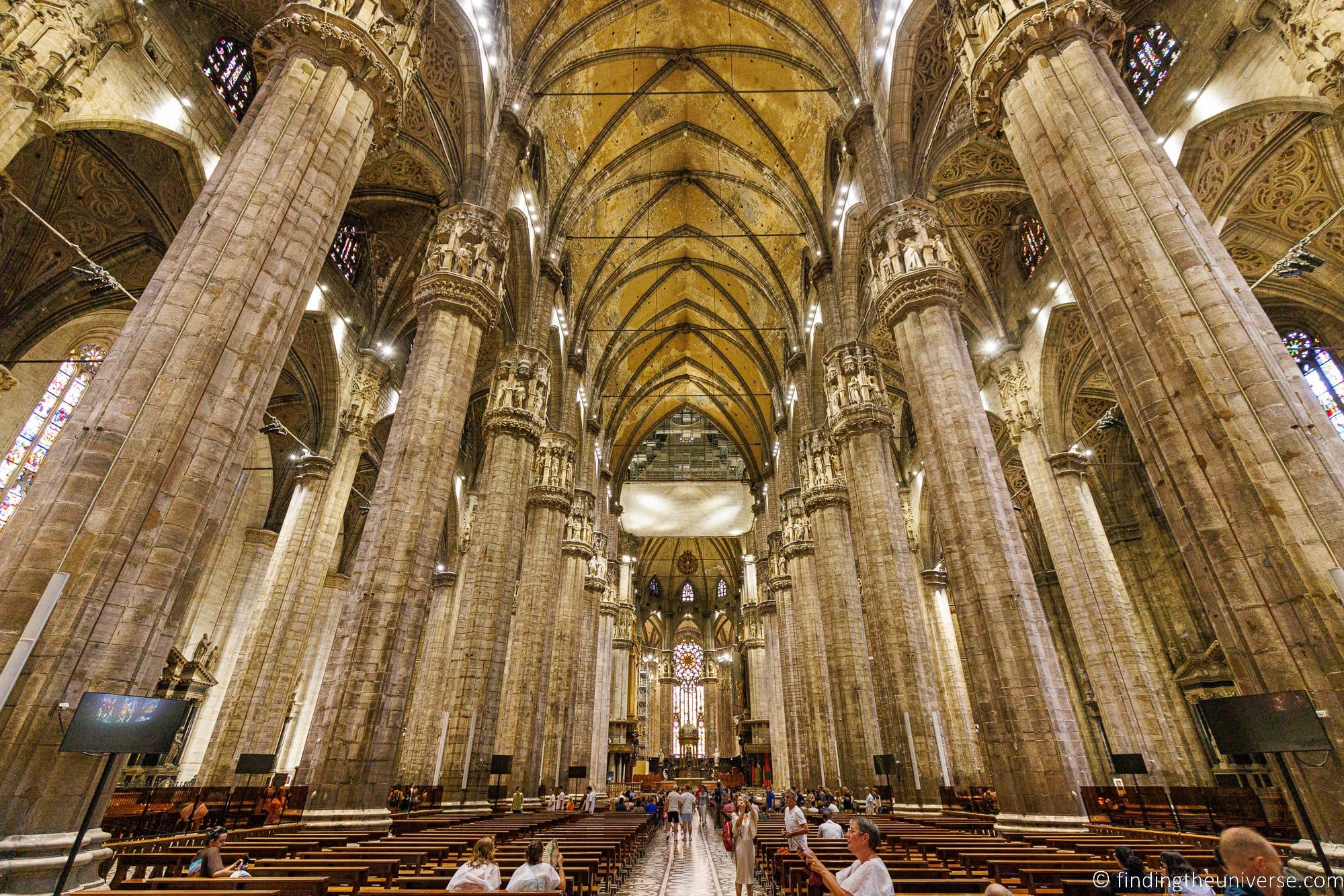
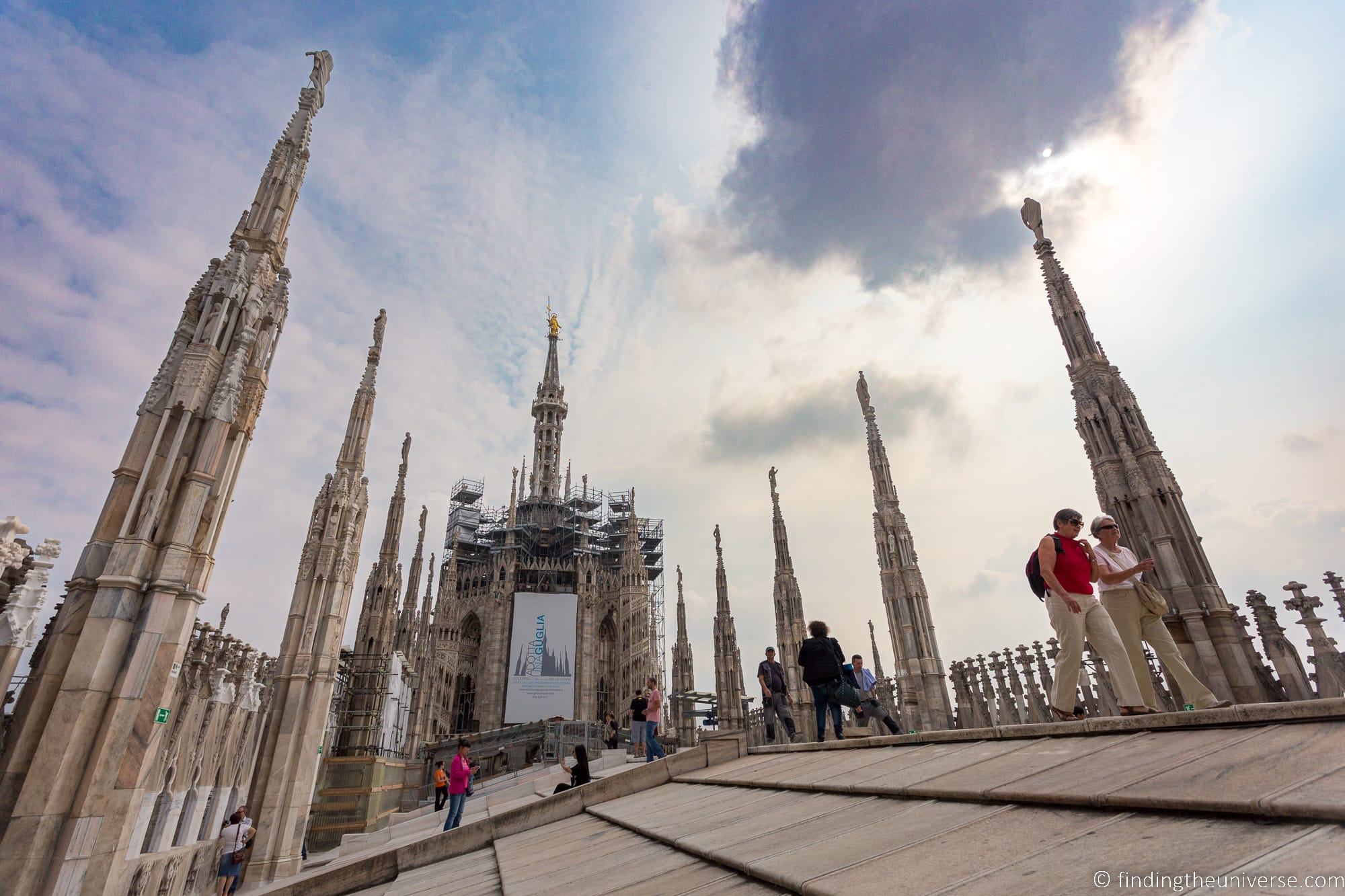
Galleria Vittorio Emanuele II
Moments away from the Duomo, and on the same Piazza, you will find an entrance to the Galleria Vittorio Emanuele II. This is a huge glass and steel shopping mall fronted by a triumphal arch which opened in 1877.
That makes it one of the world’s oldest shopping malls, and we’d argue it’s also one of the more picturesque malls you are likely to visit.
The four-storey interior consists of a pair of intersecting glass-topped arcades. Where the streets intersect, there’s a massive glass and metalwork dome. On the ground is a beautiful mosaic floor.
If you are interested in high-end shopping, then the Galleria is definitely a good place to check out. Designer stores including Gucci, Louis Vuitton, and Prada can all be found within, alongside bars, cafes, and restaurants.
Even if you aren’t shopping on a high-end fashion budget, we’d argue the Galleria is well worth a visit. It’s free to visit, it’s right by the Duomo, and it is quite a marvel to behold.
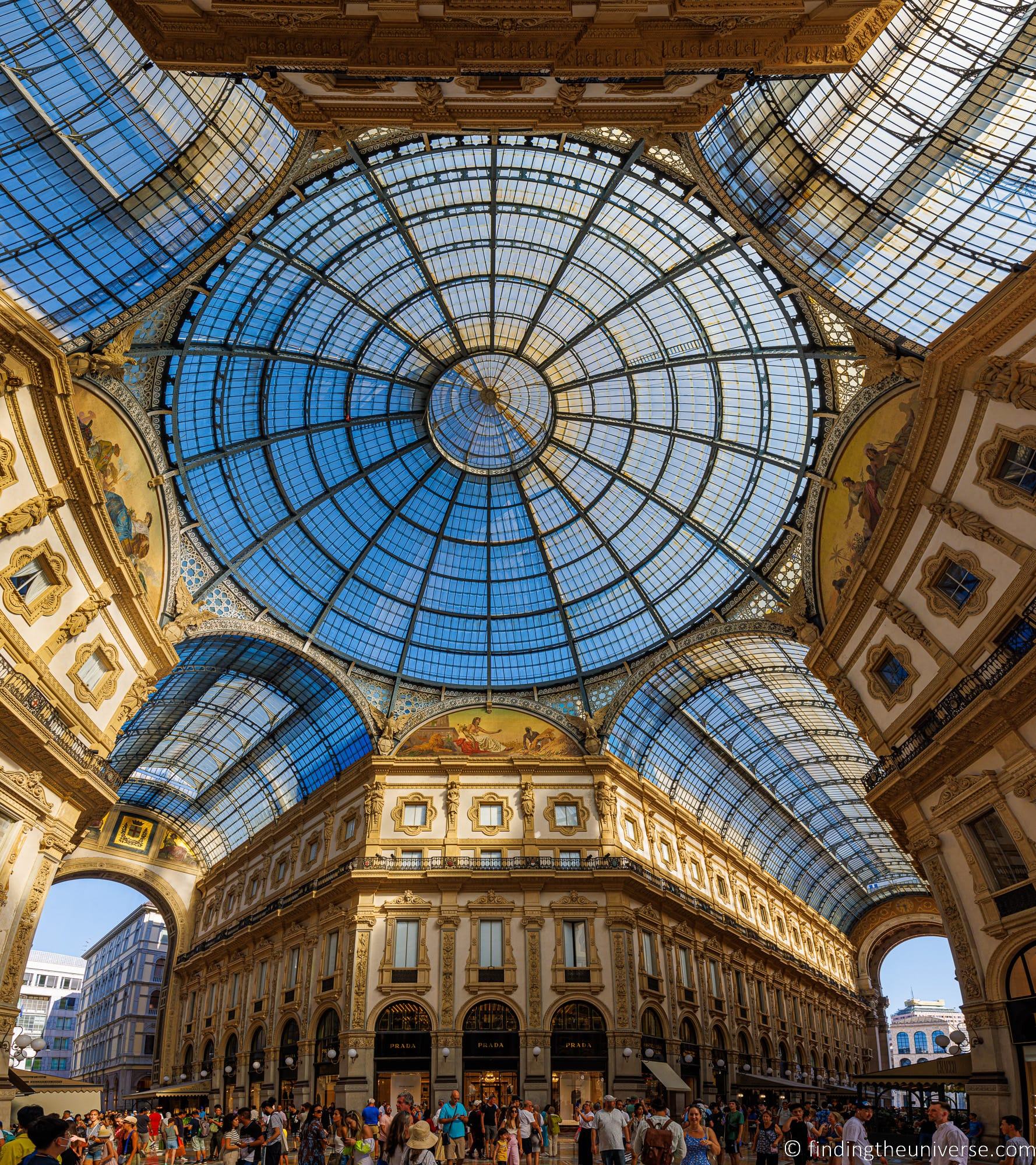
La Scala Theatre
Just a minute’s walk from the Galleria is the Teatro alla Scala, also known as La Scala. This is one of the world’s most famous opera houses. It dates from 1778, although it has been expanded and modernised over the years.
The theatre is fully operational, so you can of course visit for a performance should you wish. There are regular ballet and opera performances, and if this is of interest you can see the schedule of performances and book tickets on the official website here.
However, you don’t have to take in a performance to visit the theatre. There is a small museum on site, or you can take one of the hosted guided tours that the theatre runs.
Museum access gives you access to some of the boxes, so you can see the theatre itself. This is dependent of course on the rehearsal schedule, which you can check online before you visit.
Alternatively, you can take one of the guided tours. These have quite limited availability, so do book in advance if you want to do one of these. They offer tours in both Italian and English. On a tour you get to see behind the scenes of how the theatre works. They are a bit more expensive than the museum access, but you also get a much more in-depth experience.
You will want to check tour times as they are limited, and you may need to adjust this itinerary accordingly depending on the guided tour time.
You can see tour times and prices, as well as museum entry times and prices on the museum website here. Access to the Museum is also included on the Milan Pass.
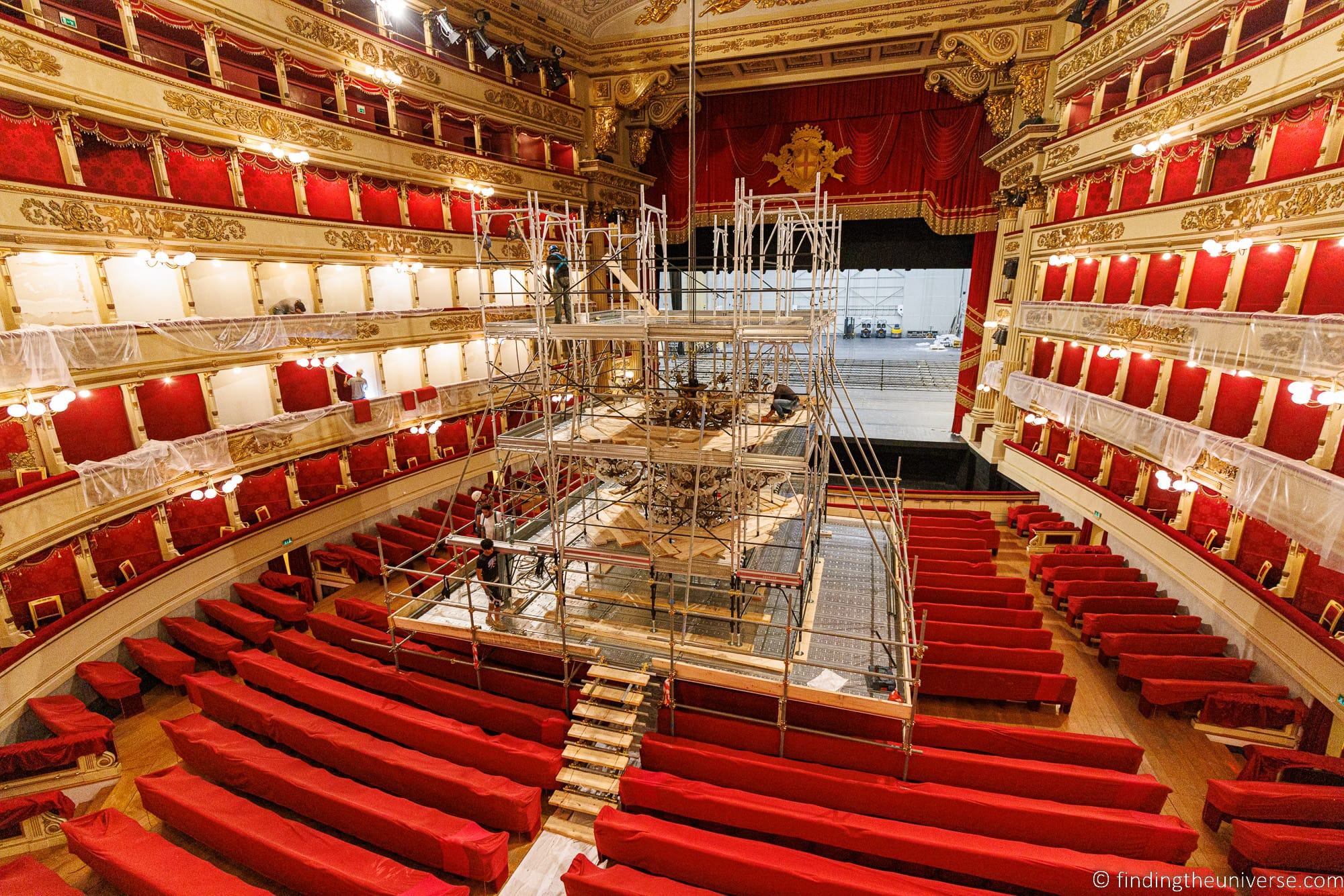
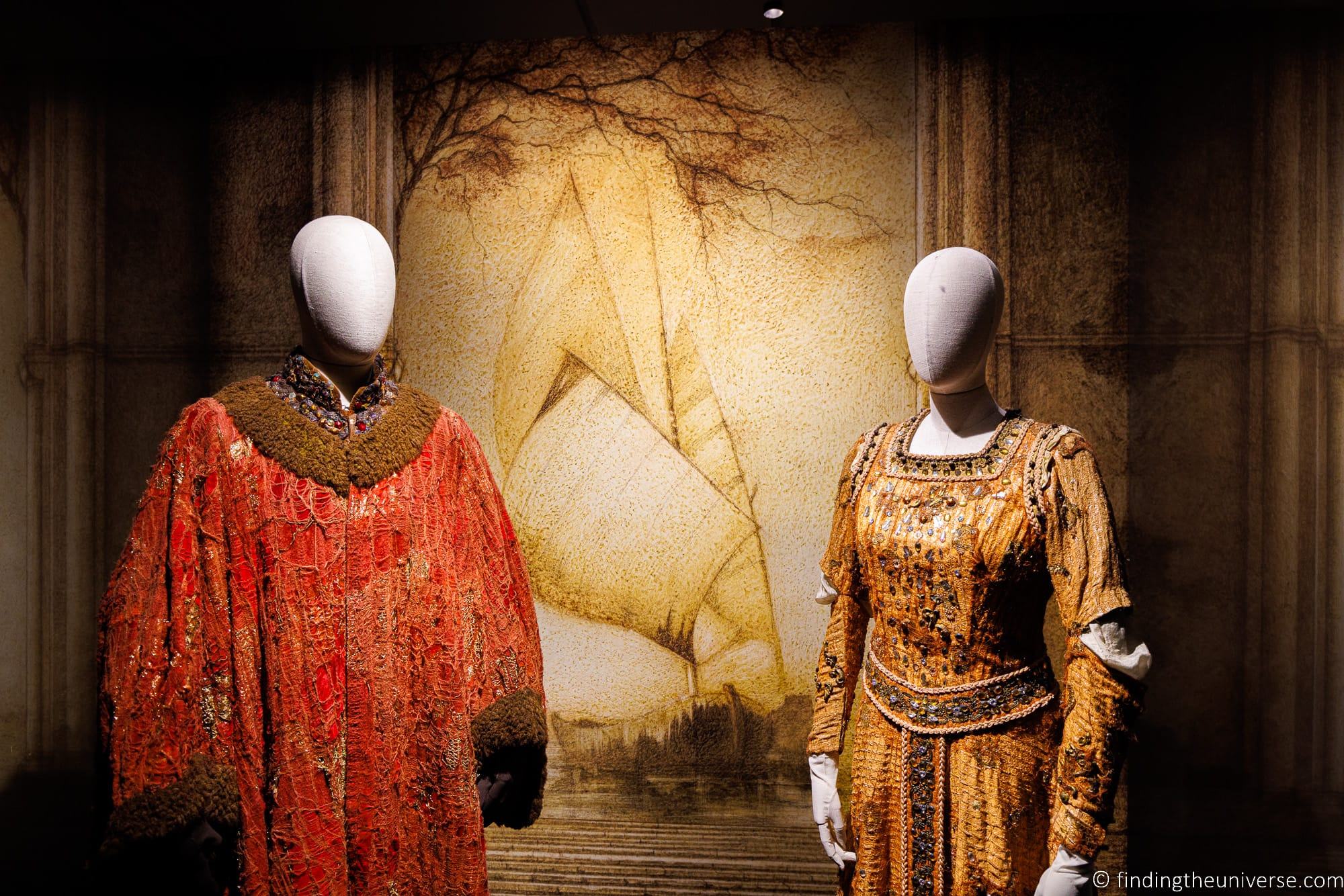
Nighttime options
After a full day of sightseeing, you may be wondering what to do in the evening. Now you have a number of options.
Of course, you could have dinner and head back to your hotel or apartment to relax. You’ve certainly earned it. Check out some ideas for Milanese dishes to try in our guide to things to do in Milan.
In the warm weather months, there are lots of bars and restaurants with outdoor tables set up that are perfect for enjoying an aperitivo and/or meal and watching the world go by.
However, if you did want some evening entertainment there are of course plenty of options.
First, you could take an evening aperitivo tour like this. Or just head out to a local bar for a drink and to enjoy local life.
If you would prefer to sightsee in the evening, there are also evening walking tours like this, although you may want to adjust your itinerary for the day as these do revisit some of the same locations you’ve already been.
Another option would be to attend an evening performance of live music, opera or ballet. You can see some of the live performances available and book tickets here.
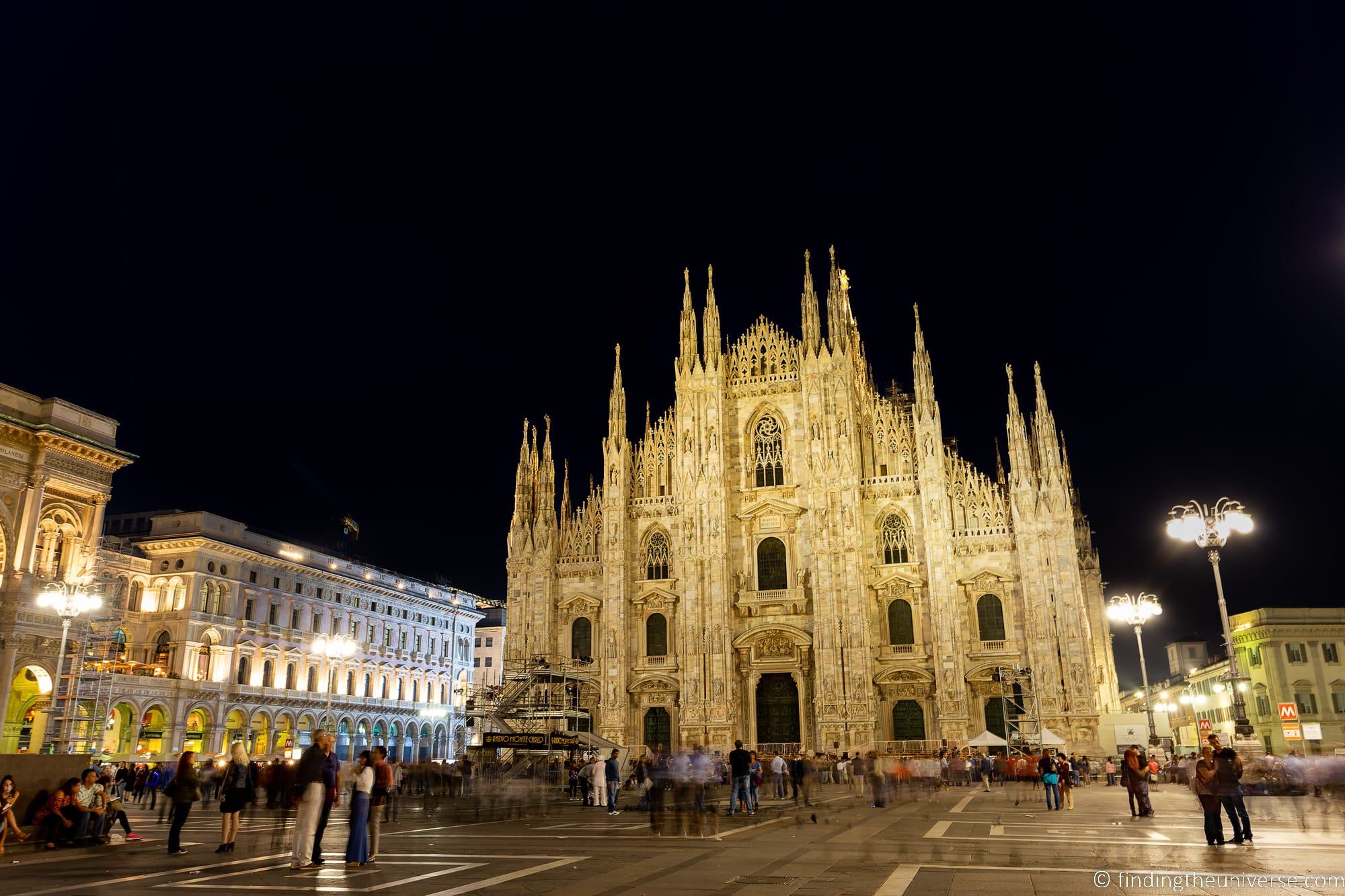
Milan Itinerary Day 2
For your second day in Milan, you have a few options. First, you could take a day trip out of the city. Milan is well positioned for exploring the local area, with fast train travel opening up a wealth of possibilities.
We have a number of suggestions further on in the post for day trips from the city, but one great option would be to take a day trip to Lake Como, which is just an hour north of the city.
You can also visit destinations including Verona, Florence, Bologna and even Venice from Milan.
Another option would be to indulge in a day of shopping. We’ve included shopping recommendations in this itinerary, but you are welcome to dedicate the whole day to shopping of course. For example, if you want to visit the outlet village you’d probably want to spend most of the day there.
Of course, there is still lots more to see in Milan, so here are some suggested stops for a second day in the city.
Castello Sforzesco
Your first stop on your second day in Milan is the imposing Castello Sforzesco.
This was built as the residence of the powerful family ruling Milan in the mid 15th century, and they spared no expense in making it into quite the structure.
It had to be built for two purposes, defensive and residential. Italy at the time was divided and ruled by different families, and conflicts were not uncommon. So the Castle had to be built to be highly defensive.
Presumably however, no-one wanted to live in a castle that wasn’t also aesthetically pleasing. To solve this problem, the finest artisans of the day (including Leonardo Da Vinci), were employed to ensure it was also a grand place to live and entertain.
The overall result was rather impressive. When completed, it was one of the largest fortresses in Europe, with massively thick defensive walls and towers that also happened to have interiors designed by Da Vinci and Bramante. The best of both worlds.
Today, the majority of the castle has survived, with much of it used to house a number of interesting museums. These cover a range of subjects including Renaissance art, archaeology, musical instruments, and ancient art. There’s even an unfinished marble sculpture by Michaelangelo.
You can visit the castle grounds for free, but entry to the Castle Museums is ticketed. One ticket covers all the museums within the castle. We think it offers great value considering how much it includes. Just be sure to keep your ticket within reach as you will need it as you go along to different sections of the castle.
You can spend most of the day exploring all the museums here (there is a lot here), so we’d recommend allocating at least a couple of hours here.
You can see prices and opening times here. It’s also included on the 3-day Tourist Museum Card.
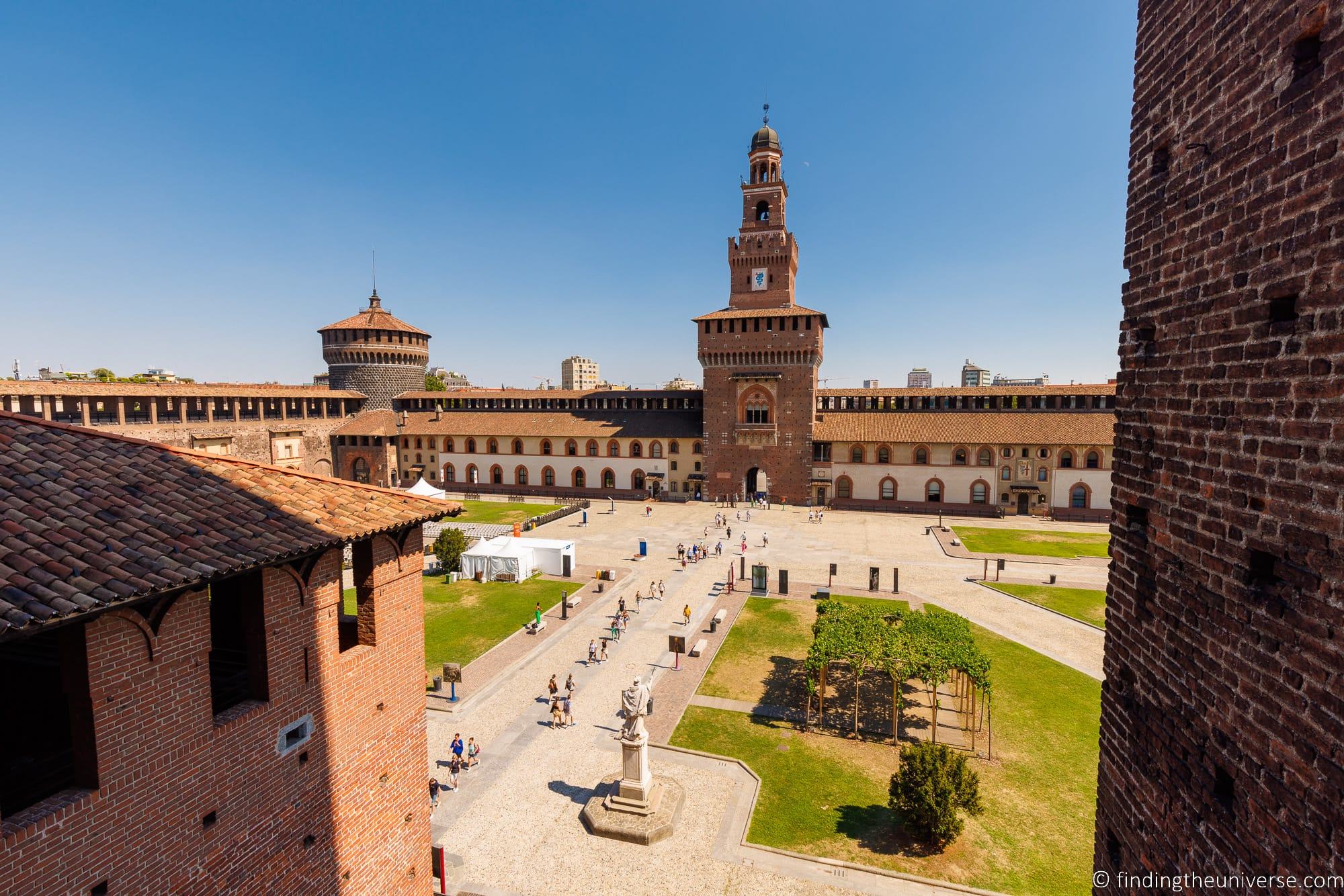
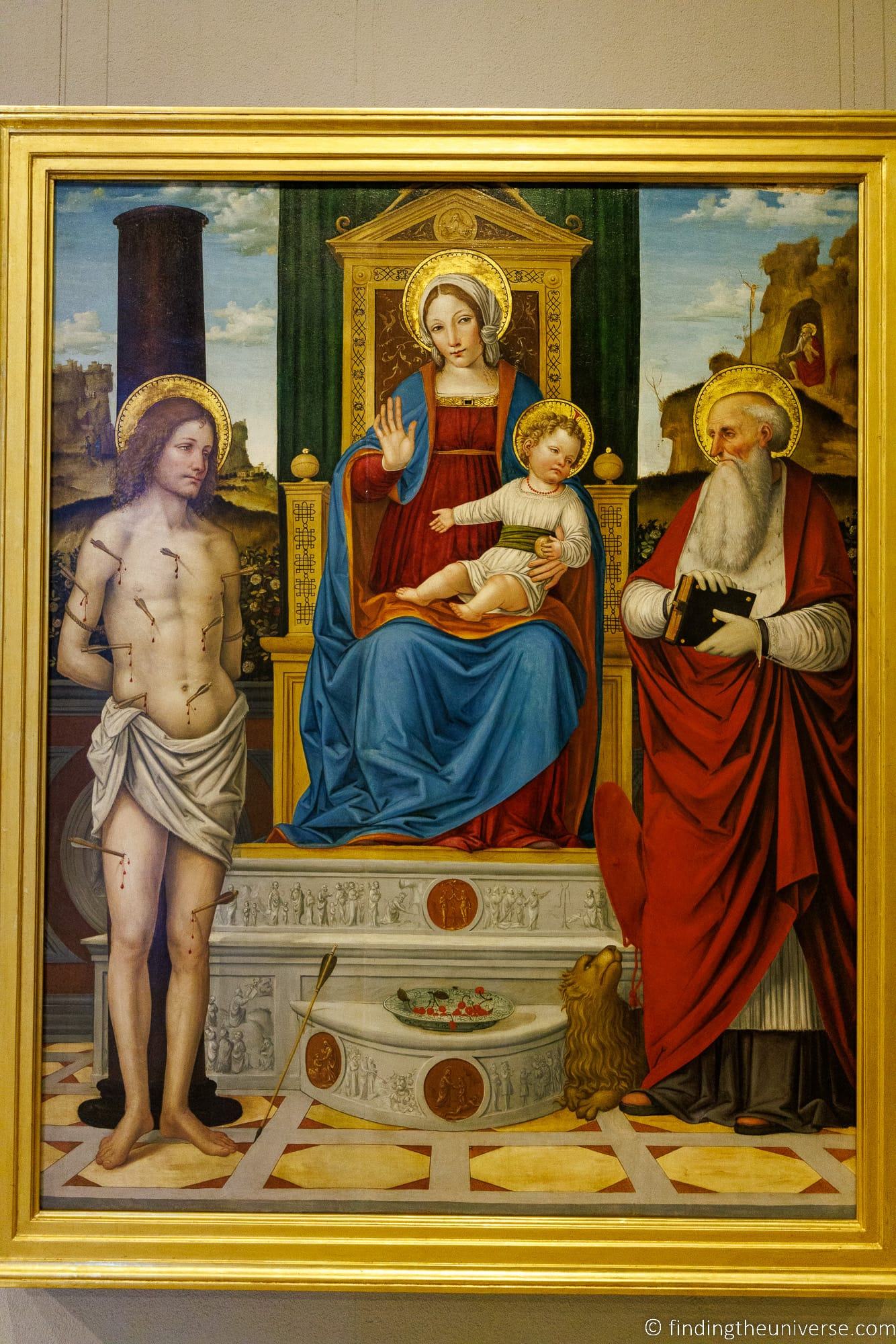
Parco Sempione
Found adjacent to Castello Sforzesco, Parco Sempione offers 95 acres of park land and impressive views of the castle. In fact, it was built in 1888 specifically with the goal of giving park visitors a panoramic view of the castle, a goal we think it achieved.
After a few hours exploring the museums and grounds of the castle, the park makes for a welcome place to relax for a while. There are sculptures and ponds to admire as well as shaded lawn to relax on. You’ll also find ice-cream vendors and there are often musicians performing here as well.
If you are hungry, you might stop and grab some sandwiches or pizza and have a picnic at the park.
If you want a good view of Milan, the park is also home to the 108 meter (354 ft) high Branca tower. This panoramic viewing tower offers some of the best views of the city, and it’s also served by an elevator making it an easy viewpoint to get to.
It’s ticketed, and you can buy your ticket online in advance here.
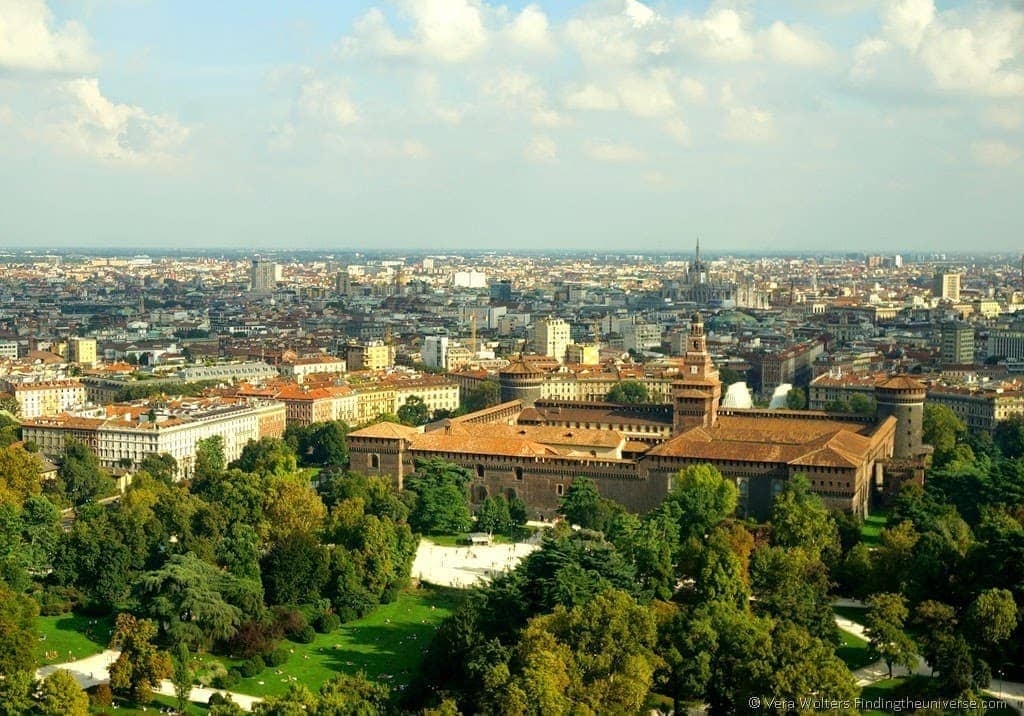
Pinacoteca di Brera
Milan has an excellent selection of museums, covering a variety of subjects. One of our favourite art museums in Milan is the Pinacoteca di Brera, which is just a 10-minute walk from Parco Sempione.
This gallery focuses on work by Italian artists, covering the 13th century through to the 20th century. These artists include Raphael, Bramantino, Mantegana, and Canaletto, amongst many others.
There’s a fee to visit, and when we visited you needed to pre-book your ticket online in advance to visit. You can read more about opening times and prices on the official website here.
Of course, there are many other museums to choose from in Milan depending on your interests, which you could visit instead of or as well as the Pinacoteca di Brera.
As well as the many museums in Castello Sforzesco, consider checking out:
We think you should find something to suit your interests from this selection of museums in Milan!
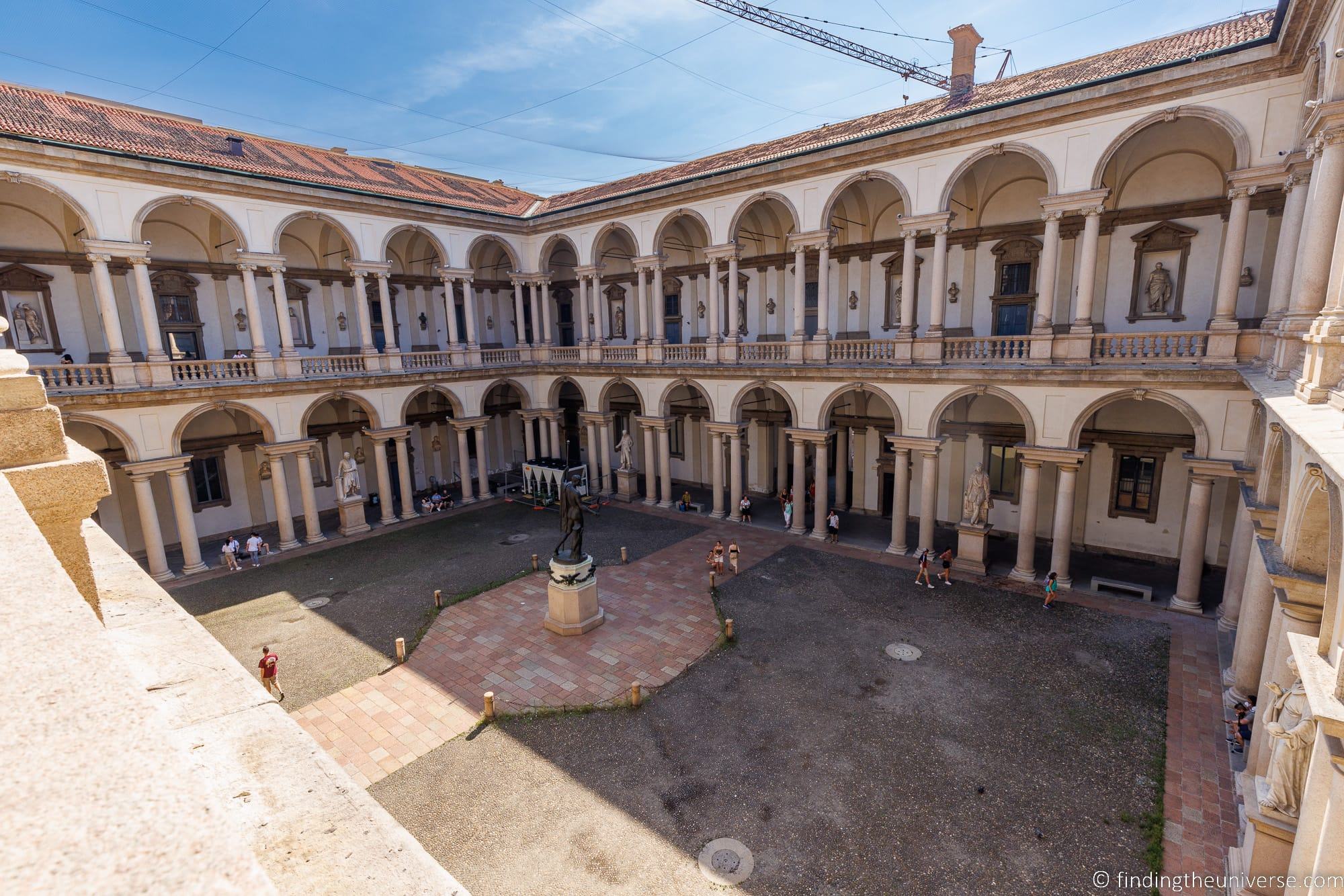
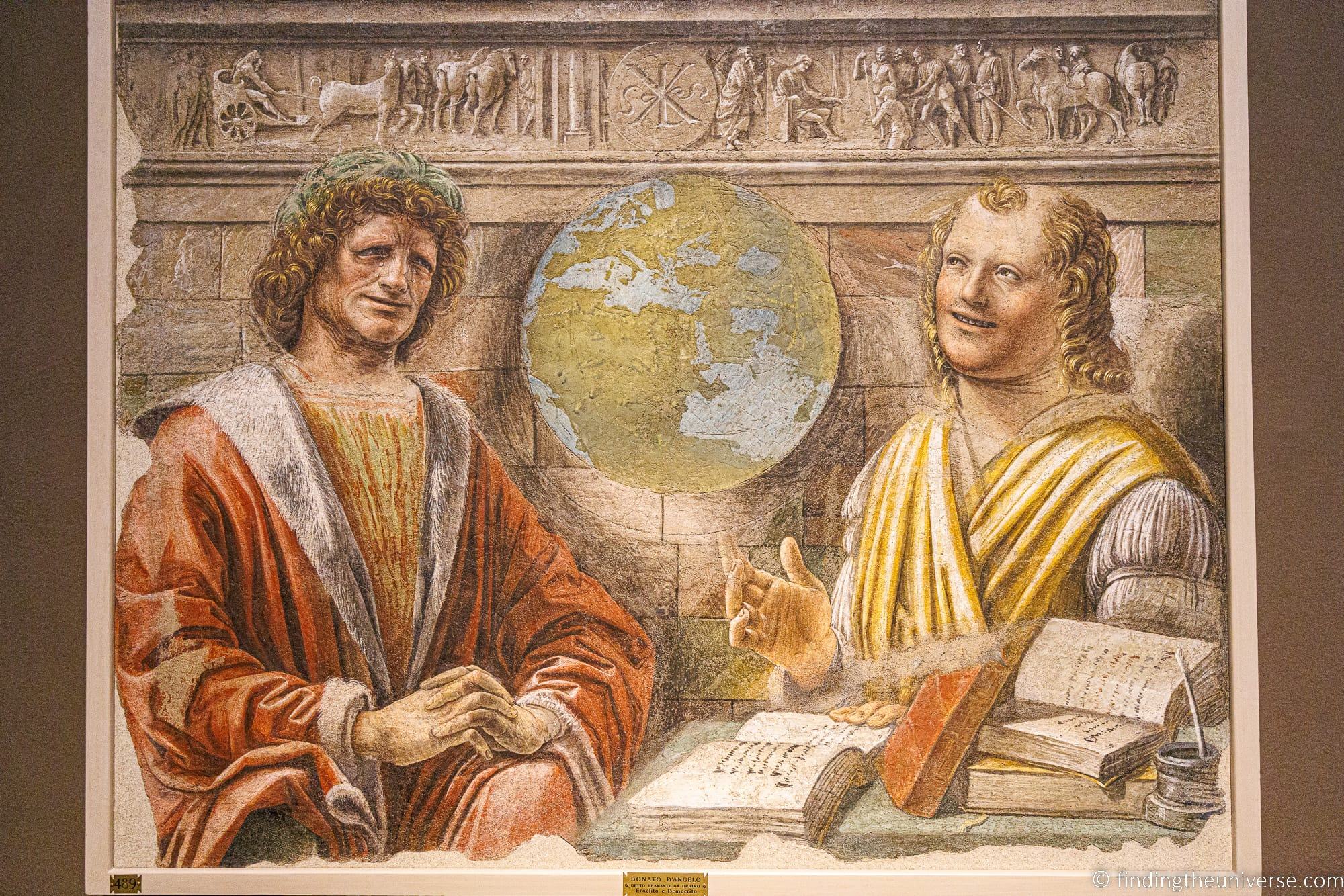
Shopping at the Quadrilatero della Moda
One of the many reasons that people visit Milan is for the incredible shopping opportunities here, so on your second day in Milan you could definitely indulge in some retail therapy. Or just some wallet-friendly window shopping.
Pretty much every high-end Italian fashion label has a store in the city, so if you wanted to add to your wardrobe, Milan can definitely sort you out.
If you’re wanting to shop for high-end designer wear in Milan, then we recommend you head to the Quadrilatero della Moda, which literally translates as fashion square. It is also known as the Via Montenapoleone fashion district, This is around a 10-minute walk from the Pinacoteca di Brera.
Here you will find the highest concentration of Italian design houses and boutiques. Milan is not just about high-end fashion of course. You’ll also find stores catering to a wide range of budgets and styles. You’ll also find lots of global brands here, not just Italian ones.
If you’d like to learn more about fashion in Milan, you may also consider taking a tour like this with a style guide. They’ll guide you through the options and you’ll learn about the history of fashion, what a Made in Italy label means, and visit a designer’s studio.
If you are more in search of a bargain, then you might consider heading out of the city to visit the Serravalle Designer Outlet centre. With over 200 stores, including Versace, Gucci, Nike, Armani, Calvin Klein, Prada, Celine, Levis, Burberry, and The North Face, this massive shopping centre is located about an hour from Milan.
You can visit the shopping outlet by train, or you can book a convenient round trip shuttle transfer here.
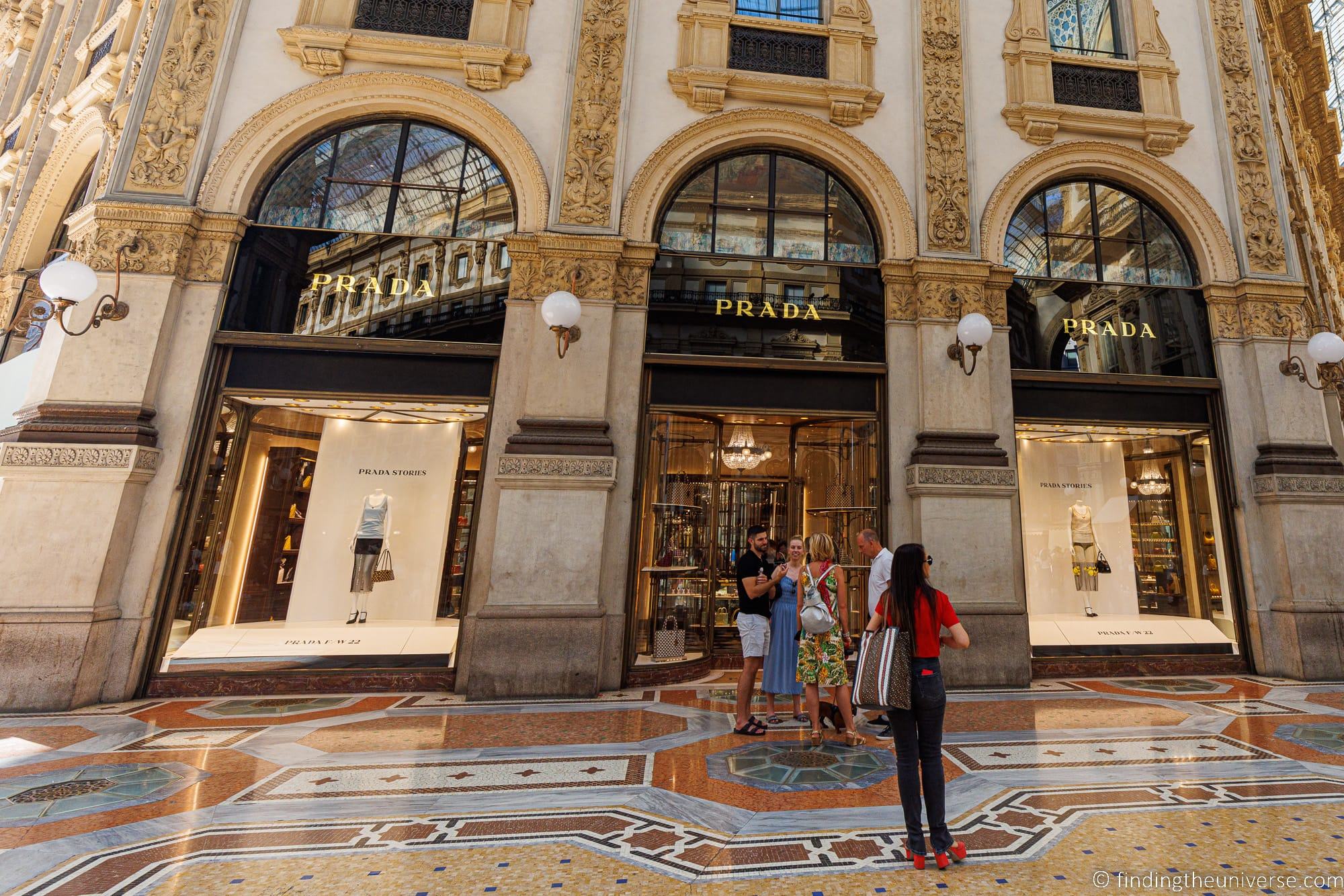
Shoah Memorial
Our next recommended stop is the Shoah Memorial which is located next to the Milan Central train station. The easiest way to get here is to take the metro from the fashion district to the train station, which takes about 15 minutes. There is also a hop on hop off bus stop at Milan Central station, as well as trolleybus services you can take.
During the Second World War, millions of Jews as well as other groups deemed by the Nazis to be inferior were systematically murdered.
Milan played a role in this genocide. The Milan Centrale train station was the deportation facility for the Jews of Northern Italy. Here, they were loaded onto trains and sent to the concentration camps, where the majority of them were killed.
This took place in the underground area of the train station, which was designed for freight processing and transport. It was underground so as to avoid disruption to passenger services.
The underground location meant that processing and loading of prisoners onto the livestock freight cars could happen in secret. Once loaded, the cars were raised via elevator onto the tracks and dispatched to the concentration camps.
For decades, the underground Platform 21 was largely forgotten. However, it has now been renovated and restored as a moving public memorial, and it opened as the Memoriale Della Shoah Di Milano in 2013.
Here the visit starts with an introduction by a staff member and inside you will see the deportation platform, a railway car used for deportation, the wall of names, testimonials, and places of reflection.
There’s a fee for visiting, and you can find out more about opening hours and prices here. It is closed on Fridays. Guided tours are normally available on weekends and it is recommended that if you wish to do a guided tour, that you book these in advance.
Be sure to check their opening dates and times before planning your visit. There is also a library and bookshop located here.
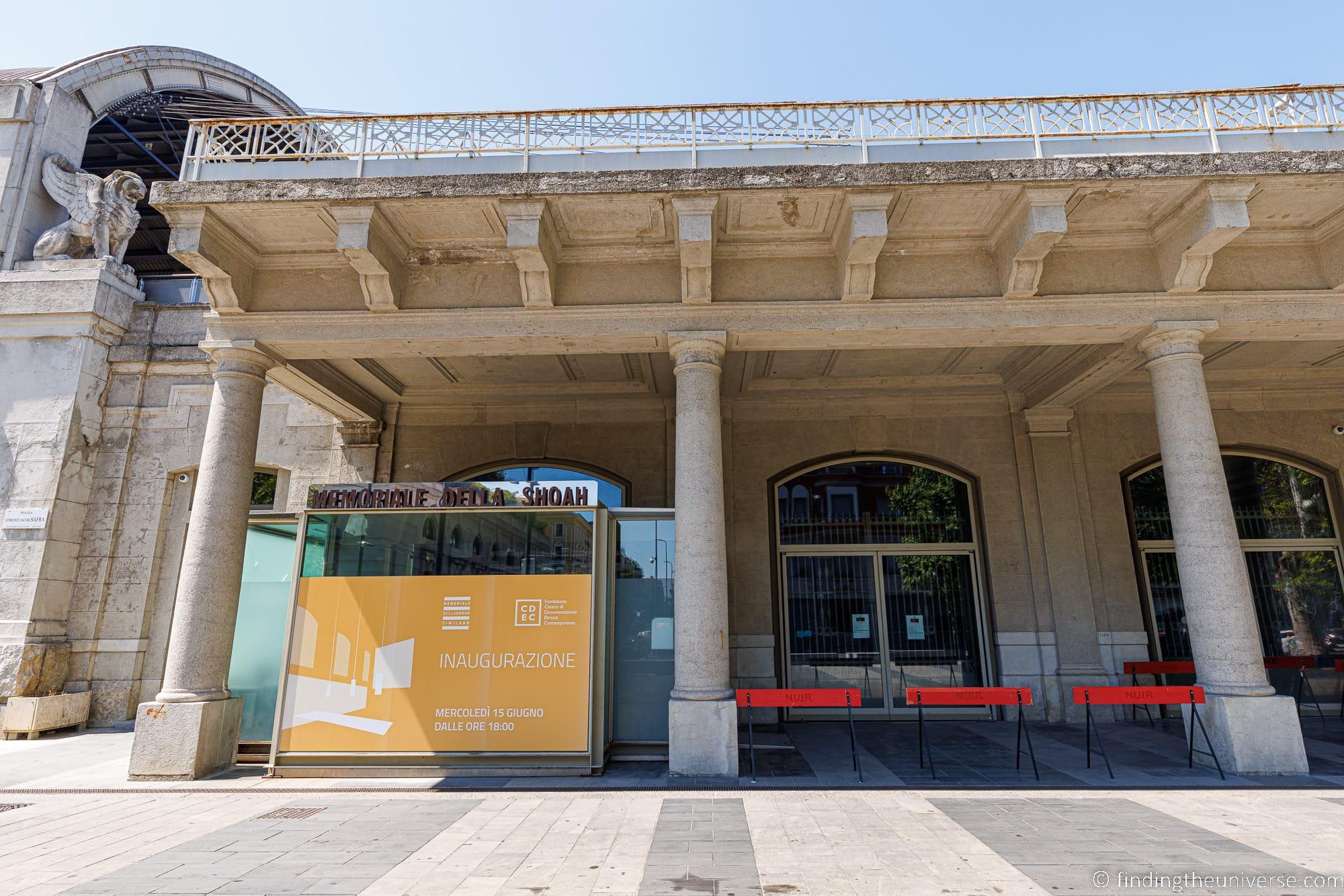
Navigli District
To finish off your second day in Milan we recommend heading to the popular Navigli District. This is in the south of the city, and is easily reached by metro, with the nearest stop being P. TA Genova FS.
It’s around a 25-minute journey from the Shoah Memorial or 20 minutes from the fashion district. There are also hop on hop off bus stops in the Navigli district.
Here, you’ll find what remains of Milan’s canal system. Originally, Milan had five canals, which were used to transport goods to and from the city. The marble used to construct the Duomo for example would have arrived by canal.
Today, only two of the canals remain, the Naviglio Grande and the Naviglio Parvese. These form a triangle that is today known as the Navigli district.
This is a very popular place to while away an evening over an aperitivo or meal. There is a huge range of restaurants and cafes to choose from, and there are also art galleries, book shops and design stores to peruse.
It is worth noting that prices in the Navigli district for food and drinks are usually a little higher than in other parts of the city due to the popularity. But it is a lovely location and we always come here for a drink and meal when in Milan.
In the spring and summer months you might also consider taking a canal cruise, which you can book here (seasonal). A canal cruise is also included on the Milan Pass.
You can also visit the Navigli area on a guided tour like this, and on an aperitivo tour like this.
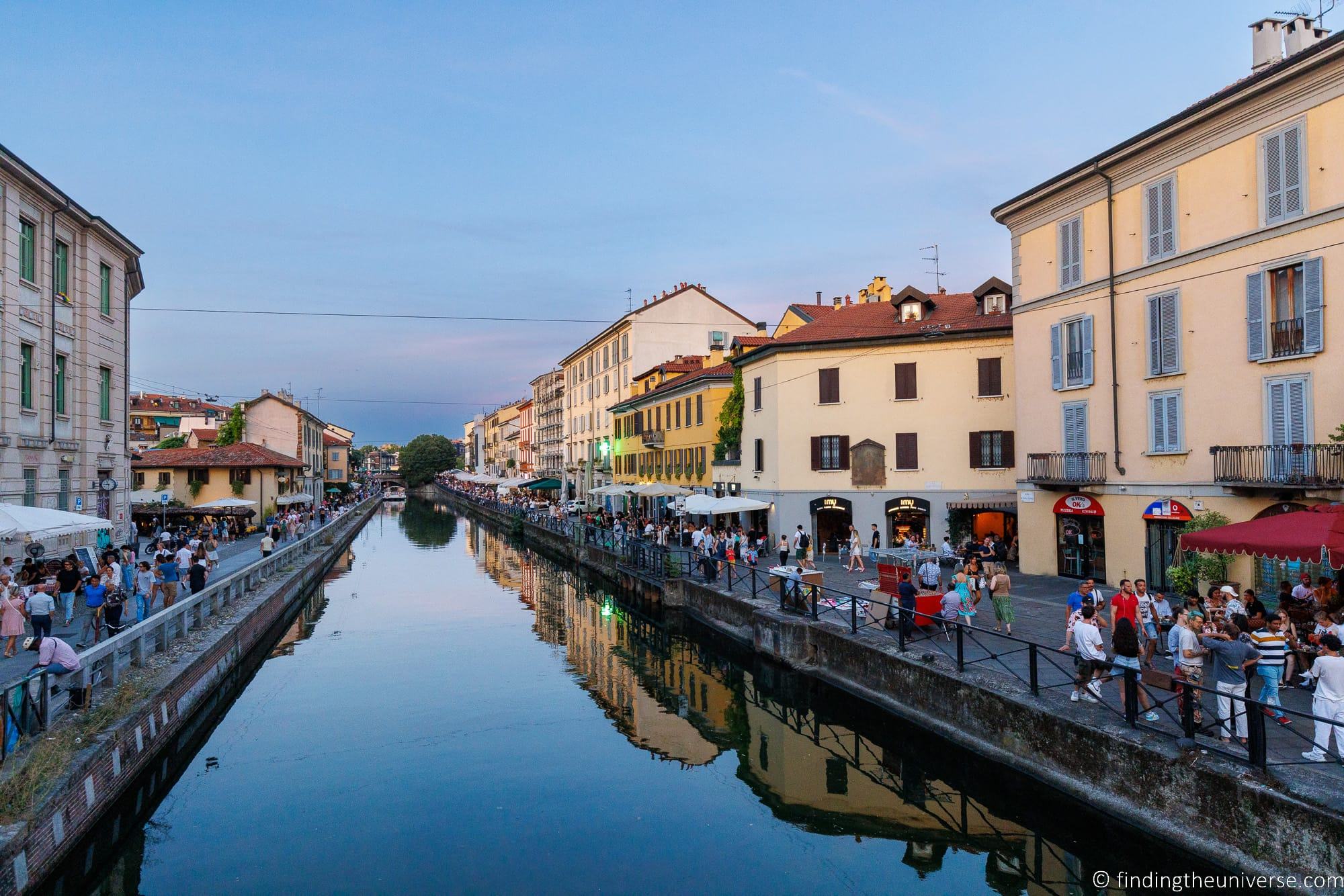
2 Day Milan Itinerary Summary
Here’s an overview of this two-day Milan itinerary.
- Day 1: The Last Supper, Chiesa di San Maurizio al Monastero Maggiore, Starbucks Reserve Roastery, Duomo di Milano, Galleria Vittorio Emanuele II, La Scala Theatre
- Day 2: Castello Sforzesco, Parco Sempione, Pinacoteca di Brera, Shopping at the Quadrilatero della Moda, Shoah Memorial, Navigli District
Map of Milan Things to Do
To help you visualise our Milan itinerary and plan your day we’ve put together this map of the attractions on each day. You can also see this on Google Maps here.
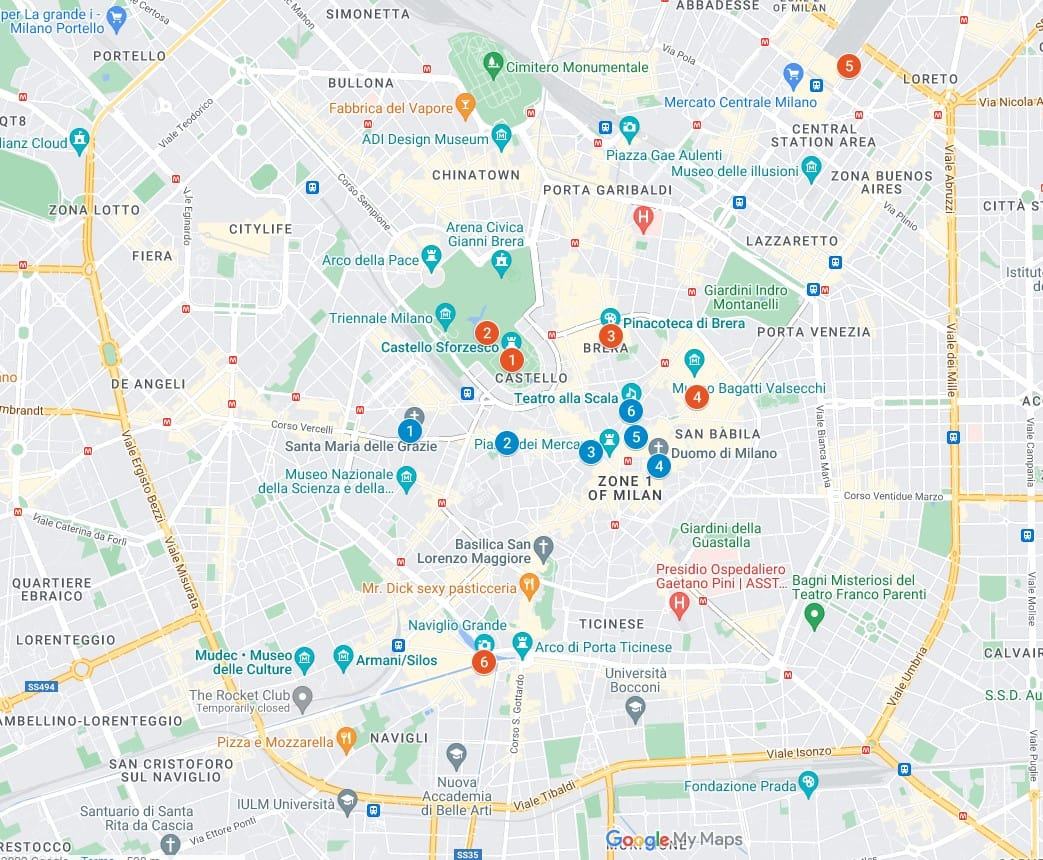
Day Trips from Milan
There is a lot to see and do in Milan itself, but the city also lends itself well to being a base for day trips to the surrounding area.
Italy has an excellent high speed rail system, so you could easily put together your own day trips. Cities and towns like Verona, Bologna, Turin and Modena can all be reached by train in under 90 minutes.
You can also get to popular destinations like Lake Como and Lake Garda easily. One of our favourite day trips from Milan is Lake Como, where you can easily hop between the picturesque lake front villages on the ferry services.
There are also a number of companies offering guided tours from Milan to nearby attractions. These normally include round trip transport and the services of a guide. Some also include extras like meals and attraction entry.
Some tours we suggest from Milan include the following.
- This full day tour which include Lake Como, Bellagio, and Varenna, as well as a cruise on the lake
- This full day tour which has you riding the Bernina train through the Swiss Alps and visiting the famous luxury resort St. Moritz
- This full day tour to Lake Como, Bellagio and Lugano, which also includes a cruise on the lake
- A full day tour to Cinque Terre from Milan
- This full day tour to Verona and Lake Garda from Milan, which includes a boat tour on the lake
- This full day tour to the Ligurian coast, visiting Genoa and Portofino, with a sail boat ride included
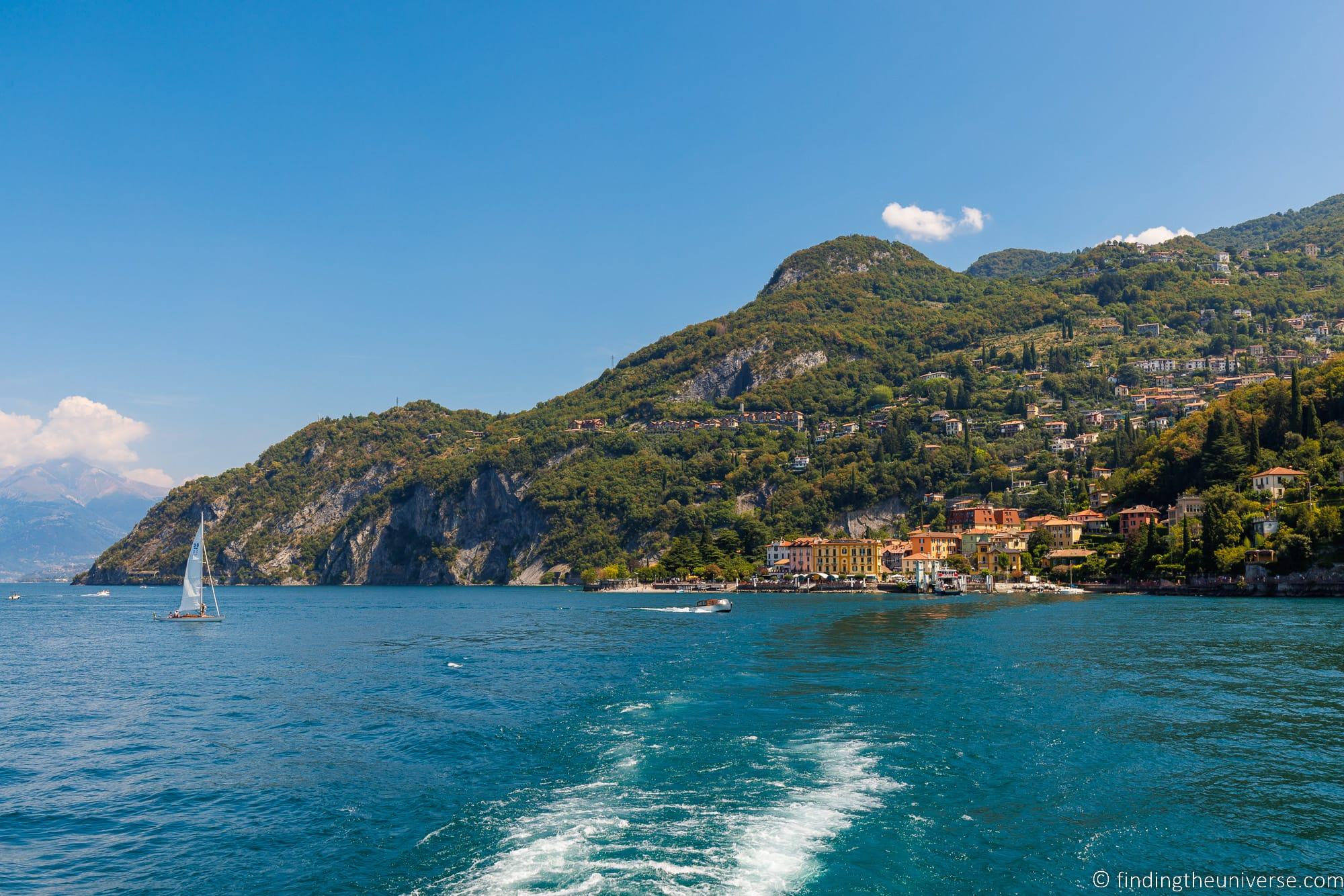
Tips for Visiting Milan
Our main tip for visiting Milan is to decide well in advance which attractions you really want to see, and look into if you need to book advance tickets or a tour.
The most popular attraction in Milan is the Last Supper, which also has the most limited tickets. So if this is on your list of attractions to see, you will definitely want to check when tickets become available on the official site so you can purchase them as far in advance as possible.
Alternatively, look into the walking tours, such as the walking tour we did which included the Last Supper. Walking tours tend to have better availability closer to the time, so this is also a good fall back option if tickets are not available on your preferred date.
Another tour which is very popular and has limited availability is the guided tour of La Scala Theatre. So again, you will want to check the official website to check when tickets become available and make a note in your diary to book them.
Other attractions tend to have better availability, but it is still worth checking which require advance ticket purchases. On recent visits to Milan, we’ve had to book in advance to visit museums like the Pinacoteca di Brera and for rooftop access to the Duomo for example.
The further in advance you book, the better your chances of securing a timeslot that works for your itinerary, and the lower the chances of disappointment.
The other thing to keep in mind when visiting Milan, as with other Italian cities, is that many of the sights are places of worship. As such, they normally have a dress code which will be enforced.
The dress code normally requires men and women to cover their shoulders and their knees. Men are also required to remove any hats.
If you are visiting Italy in the cooler months, then this dress code will probably be easy to adhere to. However, in the summer months it is very common to see visitors being turned away because they are not appropriately dressed.
If you don’t want to wear long sleeves or pants, then you might want to travel with a lightweight travel wrap so you can cover yourself when necessary, and then pack it away when not in use.
Where to Stay in Milan
Milan has plenty of accommodation options to choose from. Here are some suggested options, ordered approximately by budget from low to high.
- Ostello Bello – if you’re looking for a centrally located budget option in Milan, this is a great option. Just 10 minutes’ walk from the Duomo, Ostello Bello offers both private and dormitory accommodation, with both dinner and breakfast included.
- Babila Hostel & Bistrot – another well reviewed and centrally located hostel, Babila Hostel has both private rooms and dormitory style accommodation. Breakfast is included.
- Hotel Star – an excellent value and well reviewed 3* hotel within close walking distance of the city centre attractions. En-suite rooms with breakfast available.
- Rooms Milano Duomo – 2 minutes walk from the Duomo, this is a good 3* property with excellent reviews. Rooms are en-suite, some with city views, and come with tea/coffee making facilities
- Hotel Bristol – If you are traveling by train, this 3* hotel is an excellent choice. It’s right by Milan central station, featuring en-suite air-conditioned rooms
- Brunelleschi Hotel – A well rated and good value 4* hotel just moments from the Duomo and other city-centre attractions. Rooms are all en-suite, and a breakfast buffet is included.
- Matilde Boutique Hotel – a very well rated 4* boutique hotel just a few moments walk from the Duomo. There’s a restaurant and bar on site, breakfast is included, and rooms are all en-suite.
- Room Mate Giulia – another highly rated and centrally located 4* hotel. Rooms are modern and en-suite, and breakfast is available.
- Galleria Vik Milano – found within the stunning Galleria Vittorio Emanuele, this well located 5* hotel offers high end accommodation. Some rooms have views of the gallery, breakfast is included, and naturally rooms are en-suite with coffee machines.
Hopefully this gives you plenty of options – whatever your budget.
How to Get Around Milan
Whilst Milan is a large city, most of the attractions that visitors will want to see can be found towards the centre, within walking distance of each other. In addition, we’ve set up this itinerary in as logical a way as possible, to minimise travel time and maximise sightseeing.
That said, you might still want to take advantage of the public transport system to get to and from your hotel, or to visit locations like the Navigli district.
The good news is that Milan has an excellent public transport system which includes an underground metro, trams, trolleybuses, and buses. There are also hop on hop off buses that cover the main visitor attractions, as well as e-scooters and bikes which can be rented via smartphone apps.
Normally we use the underground metro as we find it to be fast and cost effective, and the five metro lines cover most of the city.
To ride the public transport system, you can purchase either single use tickets, or you can buy a single day or three-day ticket. Obviously the best value will depend on how much you plan to use public transport during your stay in Milan.
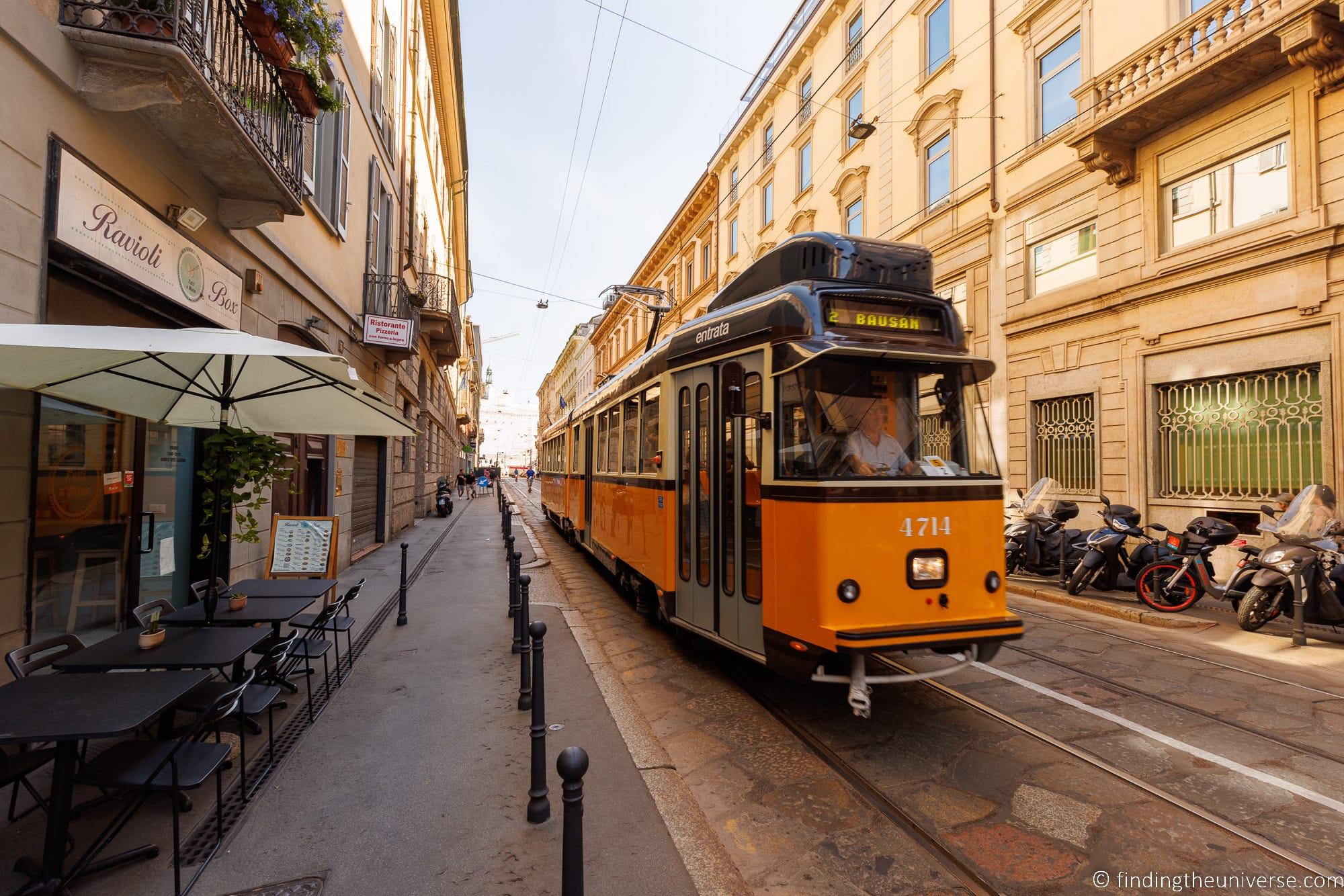
Suggested Walking Tours in Milan
One of our favourite ways to explore a new city is on a walking tour. We’ve taken a lot of walking tours in cities across the world and loads of them in Italy.
- This 3 hour walking tour offers many of the highlights of the city as well as Last Supper tickets and access to the Milan Duomo. This is the walking tour we took in Milan that included our Last Supper tickets and tour.
- There are similar tours to the above, so if that one doesn’t have availability, check out either this 3 hour walking tour which includes skip the line access to the Duomo and tickets to The Last Supper or this tour which includes the Last Supper.
- This private fashion tour with a style guide will have you learning all about the history of fashion and visiting some of Milan’s most well-known designer stores
- This small group gourmet food tour includes stops at a number of locations with tastings and drinks
- This evening aperitivo tour focuses on the late afternoon tradition of aperitivo, with drinks and street food style snacks in the trendy Navigli area
- This food and walking tour of the historic Brera district includes a number of traditional regional dishes and wines
- This 1.5 hour tour of Cimiterio Monumentale is a good way to visit the cemetery and see some of the more interesting locations
- This walking tour of the Navigli area includes information on the history and design of the canals and the evolution of the area
- If you prefer to see Milan at night, this 2 hour evening tour takes you around the historical center of Milan at night and shares stories of the city.
Hopefully you will find plenty of options for tours in Milan if that is of interest to you.
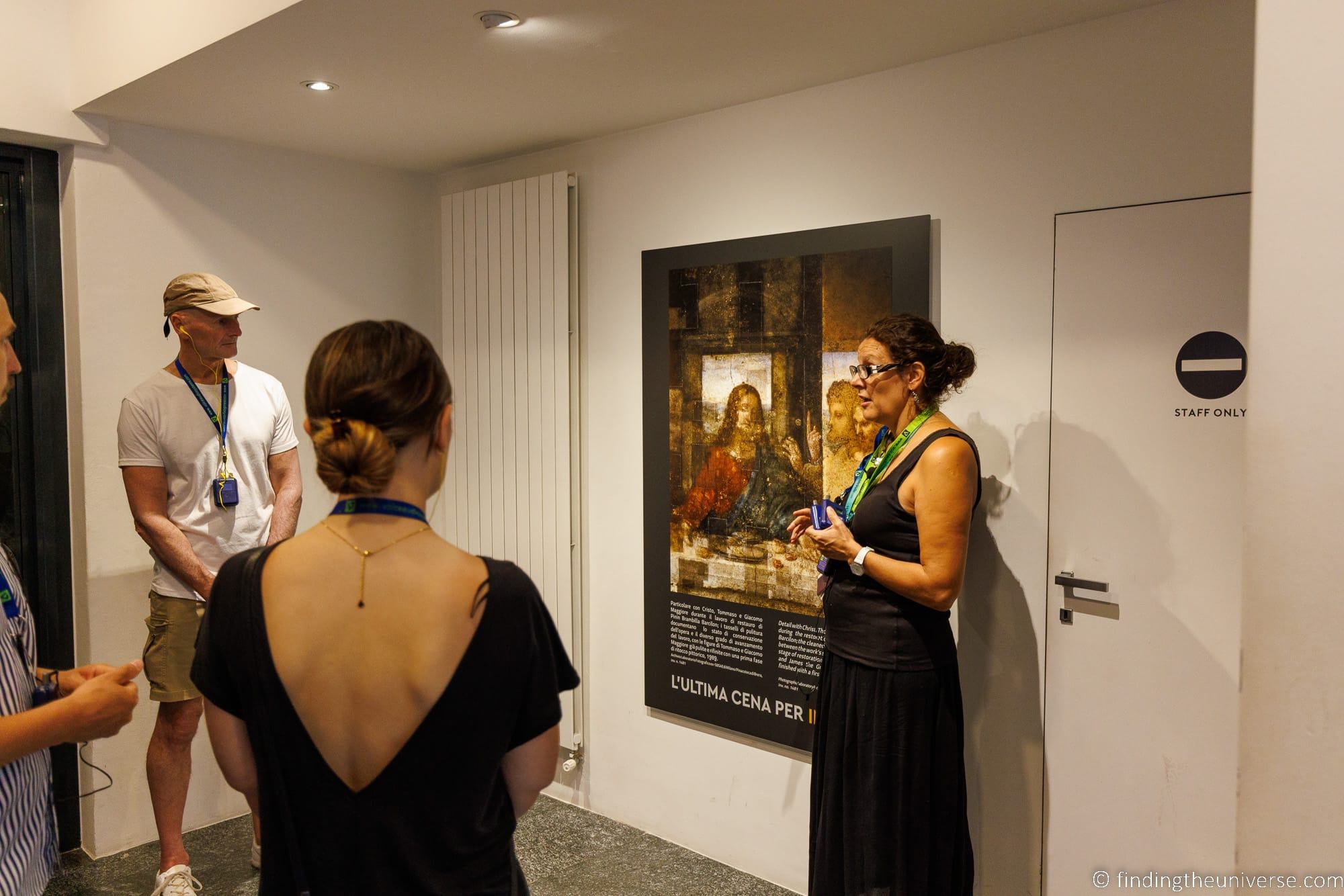
Saving Money with Milan Attraction Passes
When we visit a city, we always check to see if there is a city sightseeing pass that might save us money. These often include free or discounted entry to attractions, and also often include public transport.
The main passes that are available for Milan are:
- The Milan Pass. This 48-hour city pass includes a hop on hop off bus, free entry to various museums including La Scala, Duomo with rooftop access, as well as the option to include public transport.
- The Milano Card. This card includes free public transport and discounts on a number of museums and attractions. Available for 1, 2, or 3 days.
- The Tourist Museum Card. This three day card includes access to the civic museums of Milan, which includes the 8 museums in Castello Sforzesco as well as five other museums. It’s a great value card if the museums it covers are on your itinerary.
For most visitors we think Milan Pass makes the most sense as it includes free entry to the most popular sights in Milan including the rooftop of the Duomo. It also includes the hop on hop off bus and a Navigli Canal Cruise (seasonal).
If you are more interested in public transport and visiting some sights with a discount, then the Milano Card might make more sense.
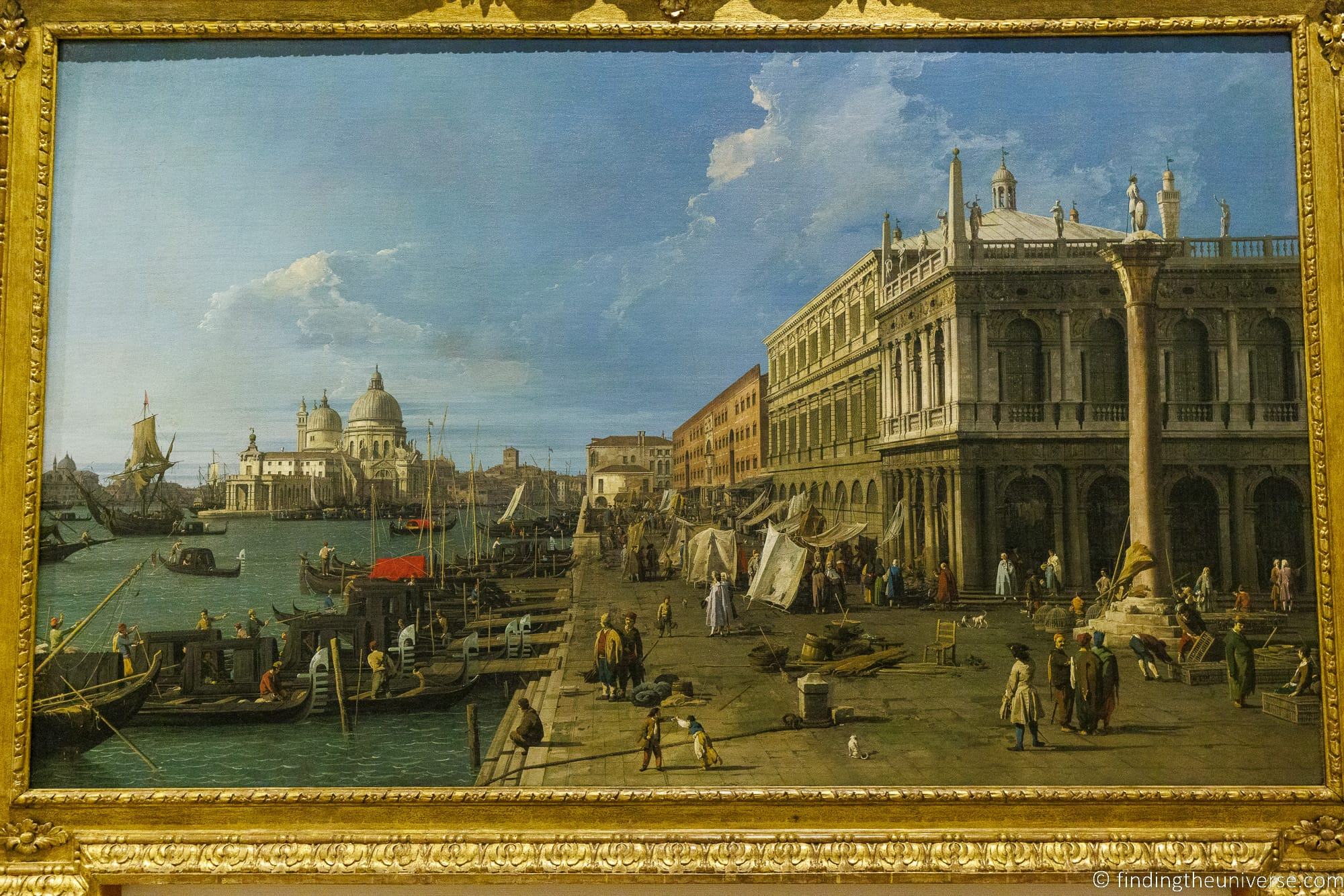
Further Reading
We’ve visited Italy many times, and have explored lots of the cities and regions that the country has to offer. Here are some more posts we think you’ll find useful to help you plan your trip.
And that’s it for our guide to spending 2 days in Milan! As always, if you have any questions or comments, just pop them in the comments section below and we’ll get back to you as soon as we can.
